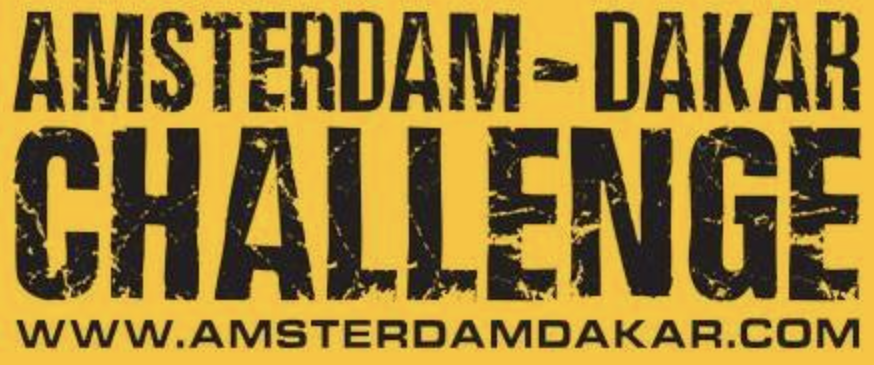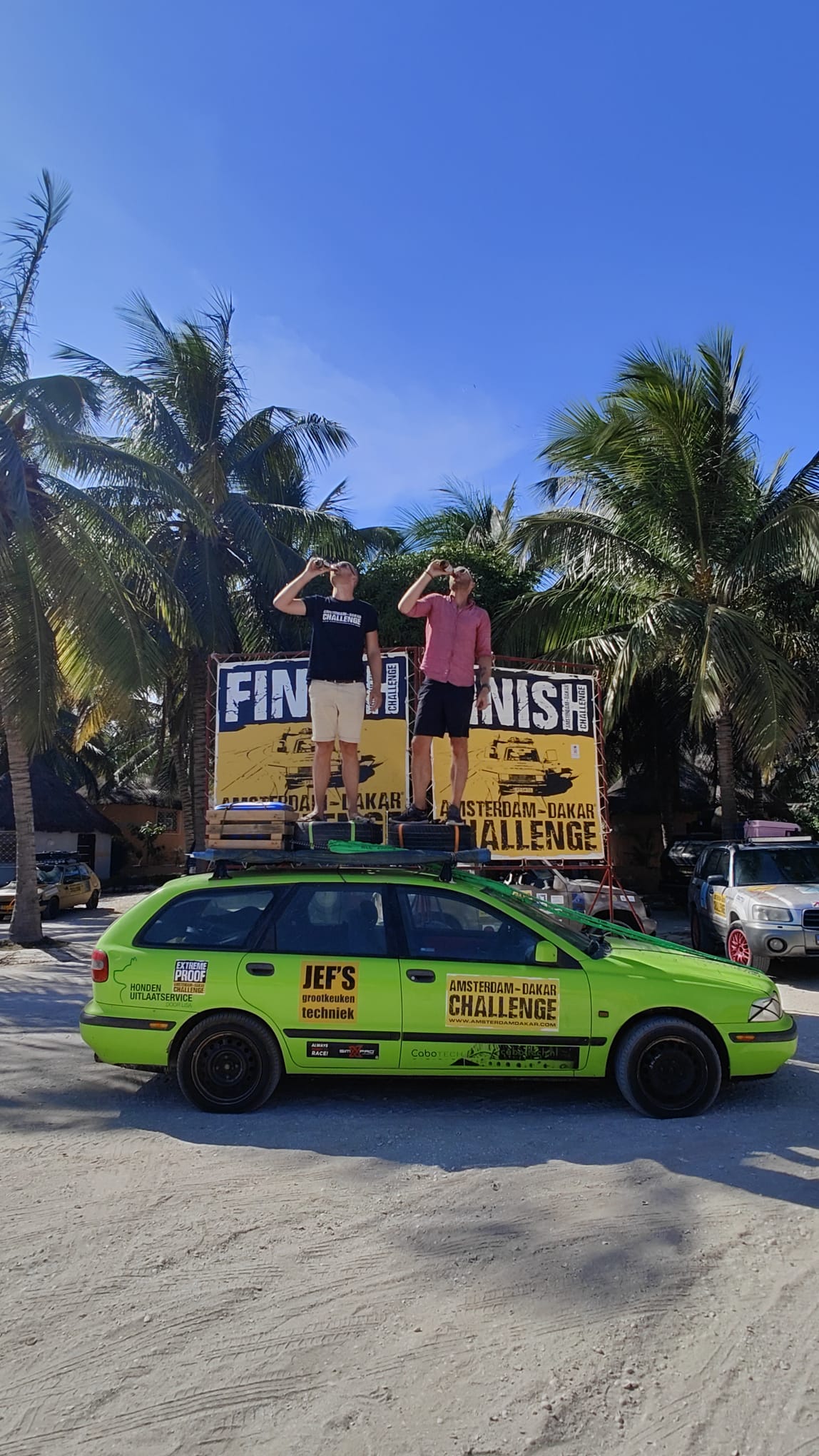
Sander and Alex from Amsterdam to Dakar
7000 kilometers in 23 days with 40 other cars in our 1996 Volvo V40 station wagon dubbed “Kermit” along the way…
Skip our incentive, the preparations and go directly to:
Amsterdam → Europe → Morocco → Western Sahara → Mauritania → Senegal → Dakar & Gambia
Our incentive
A journey from Amsterdam to Dakar, the original route of 7000 kilometers in a car for less than 500 euros. The Amsterdam Dakar Challenge is famous for being doable by any car in any condition by any drivers. As it has always been one of our bucket list items:
“If we are ever gonna do it, it’s going to be us two doing it together.”
After years of lingering and postponing a year due to corona, we enlisted.
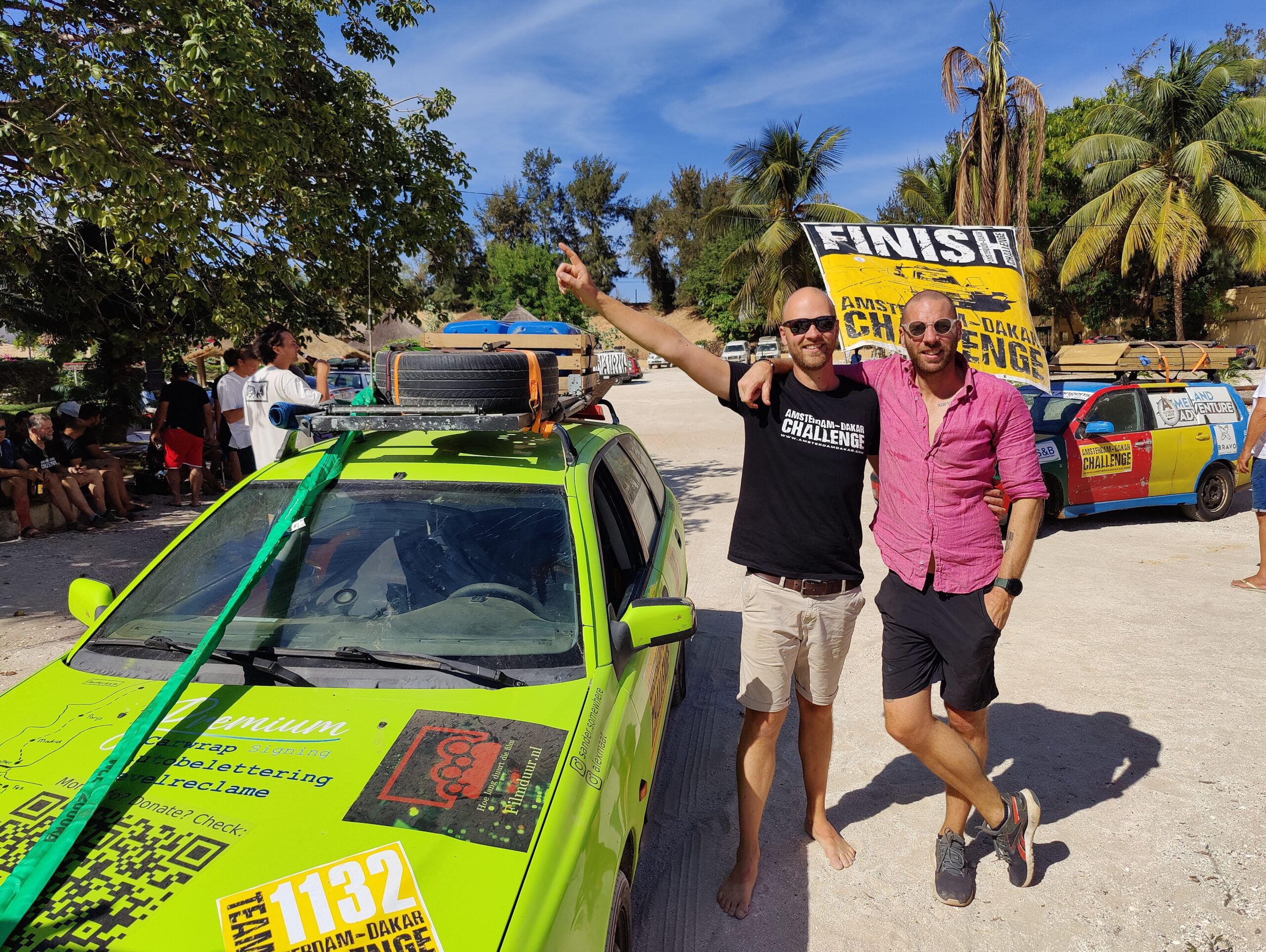
Preparations
Get a car for less than 500 euro’s (they’re not checking the receipt), get some spare tires, some extra fuel jerrycans, shed some weight, add a skid plate and you’re ready to go!
We’ve added some roof bars, built a custom roof rack, a wooden box to keep our two jerrycans with surplus gasoline, our two spare rims with tires, antenna, both shovels and our homemade canopy.
Add a custom homemade skid plate and a bolt-on LED head light bar, loose the wheel covers and rear seats and basically the rest of the interior in the back and we thought we were ready… But was it ready enough? Let’s find out!
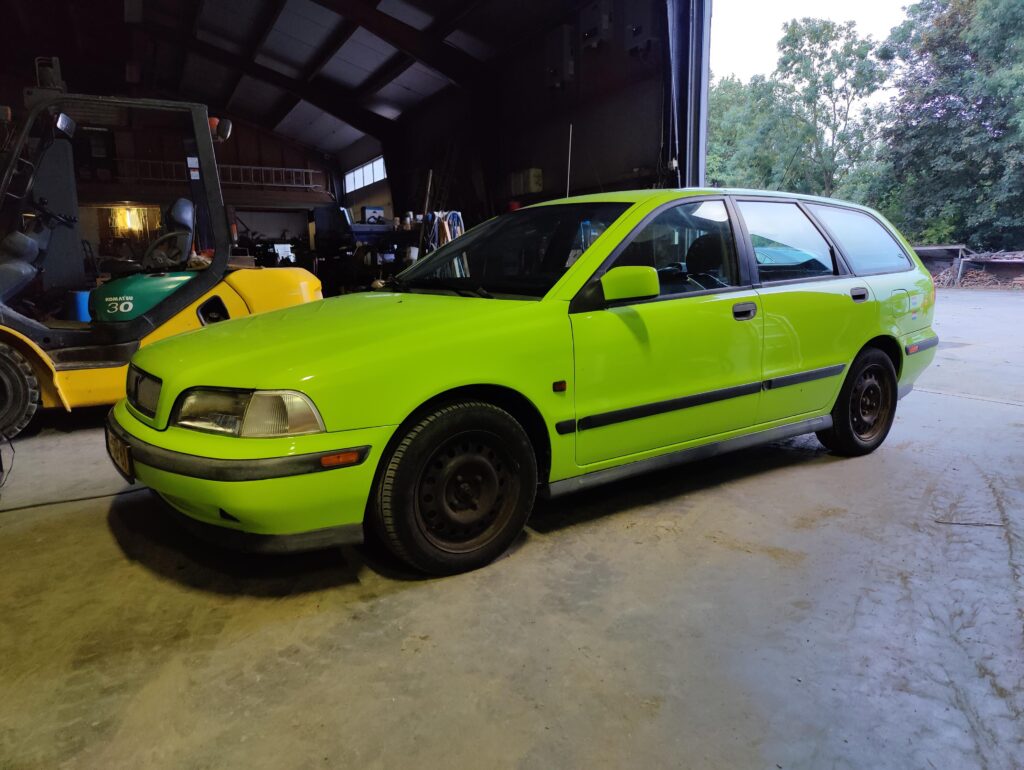
Our 1996 Volvo V40 station wagon, bought for almost 500 euro’s. Soft seats, automatic, 1.7 liter, 116 hp, 1238 kg, front-wheel drive, doing 0-100 km/h in 11.5 sec while having a 195 km/h top speed. Although acceleration and top speed went down a bit through the years, it was still a comfy car. No aircon, no cruise control, but electric windows and power steering. Not to bad for a barrel run.


At the barrel day we got our stickers and were able to try it off-road at Spaarnwoude for a bit. We were surprised it did so well, considering it is quite a big and rather heavy car. Automatic helped here and there, but generally you’d be better of driving a manual.
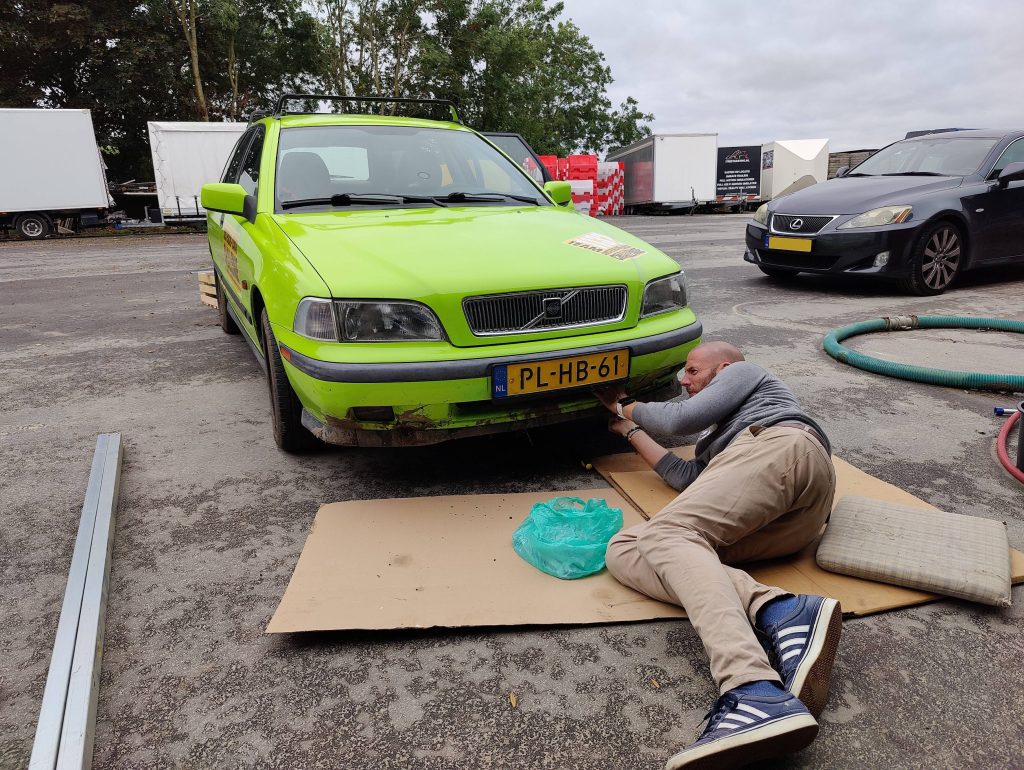

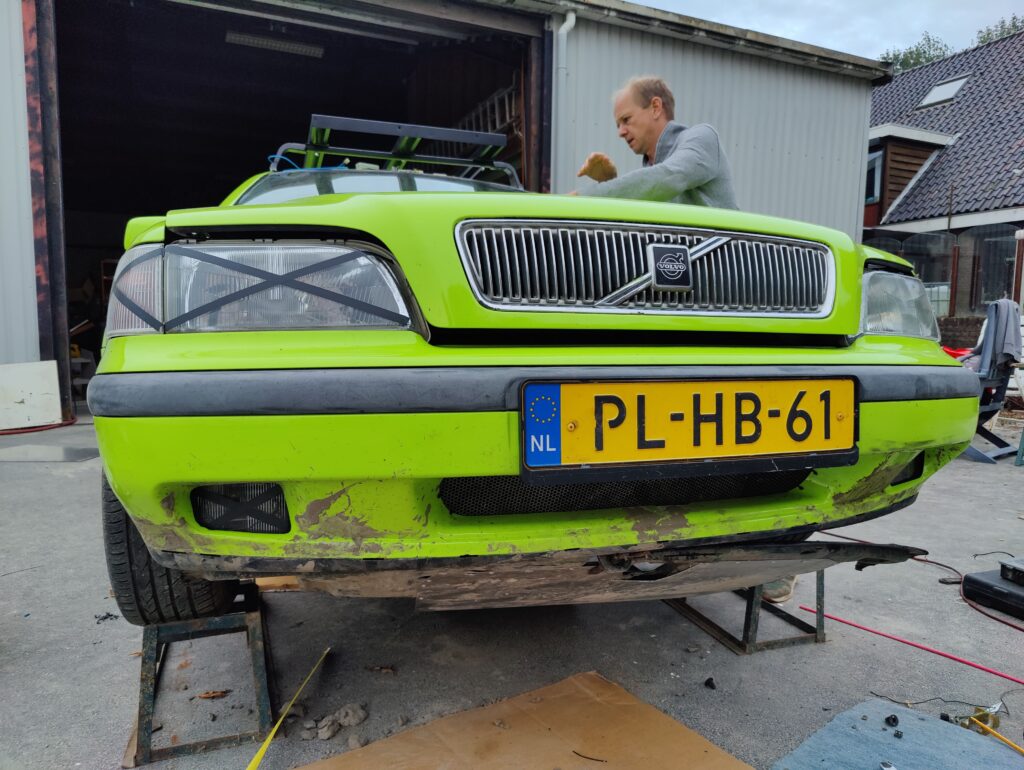
At this moment we started to notice our car was rather “sporty”: quite low, big rims, thin tires and low bumper lips. After adding this thin piece of sheet metal, we’d assume it would protect our carter from rocks and stones… Which it didn’t. Twice!
We’ve reached out to get some sponsors by the means of selling “sticker spots” on the car and donate an amount to our two good causes. The ends result looked like this:
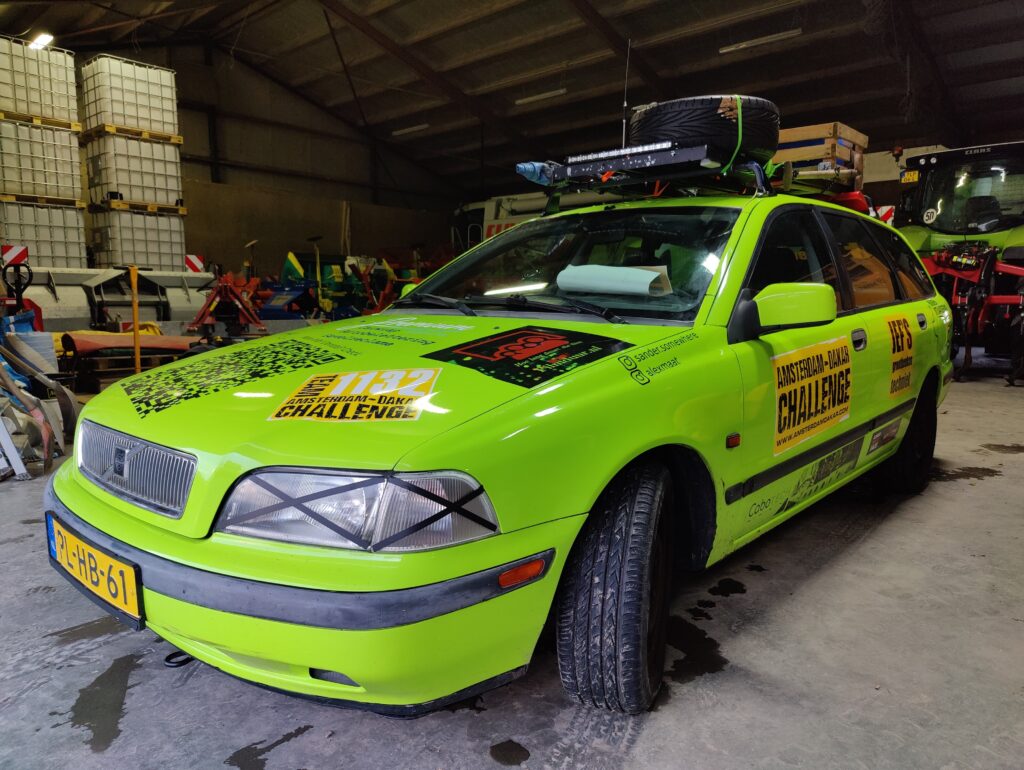

Make sure to check our walk-around on YouTube. Also, check out Sander’s video of it being finished. Finally, we’ve held a sponsor night for more donations to our good causes. Then we were ready.
The start of our journey
After a motivational speech, we said goodbye to our loved ones and started the engine of our green station wagon we learned to call “Kermit” from rather early on.

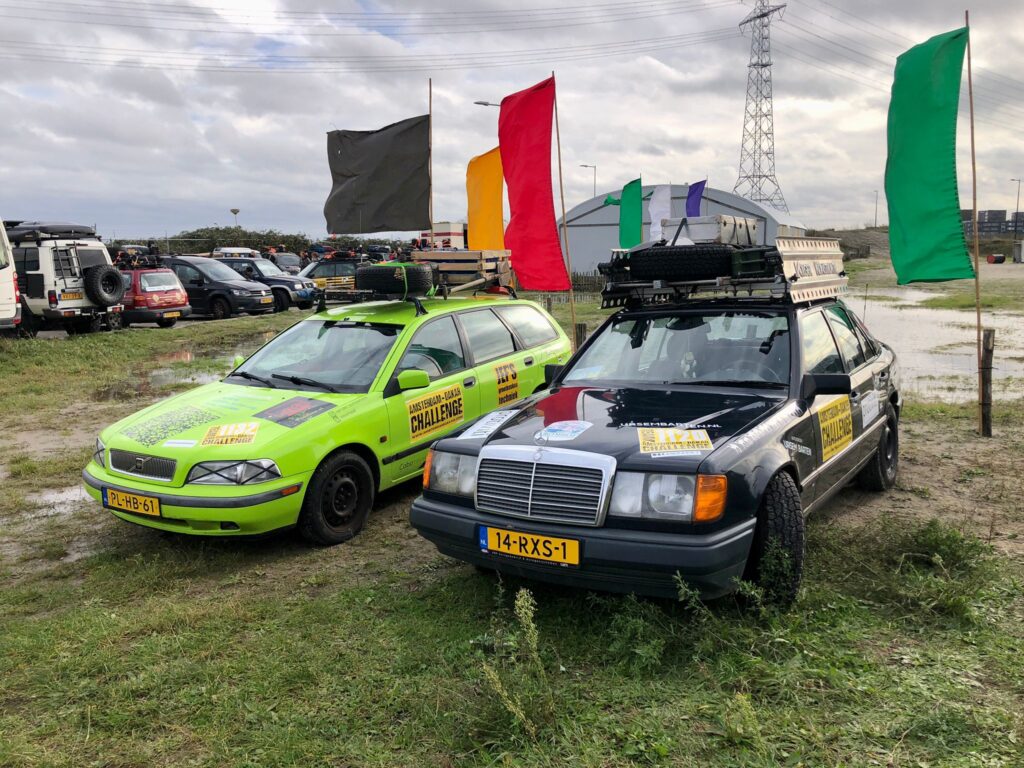
All 40 cars parked at Kaap Amsterdam, ready to head out. A speech given by the chairman of the Amsterdam Dakar Challenge with some last-minute information and supportive words.
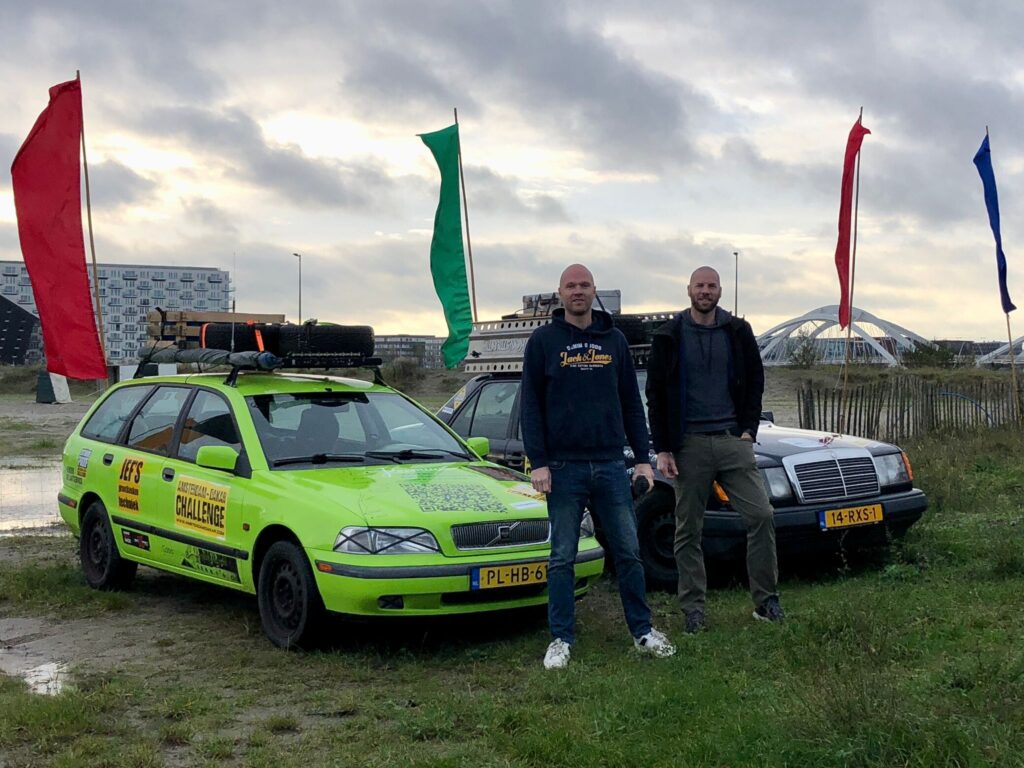

Went out to our cars and after tossing a coin which of us would start driving, we got in our cars. With lots of cheering on and waving, we set off. Our journey has begun!
Europe
3000 kilometers in 3 days driving through Europe — highways only. Some rain. Dry Spain.
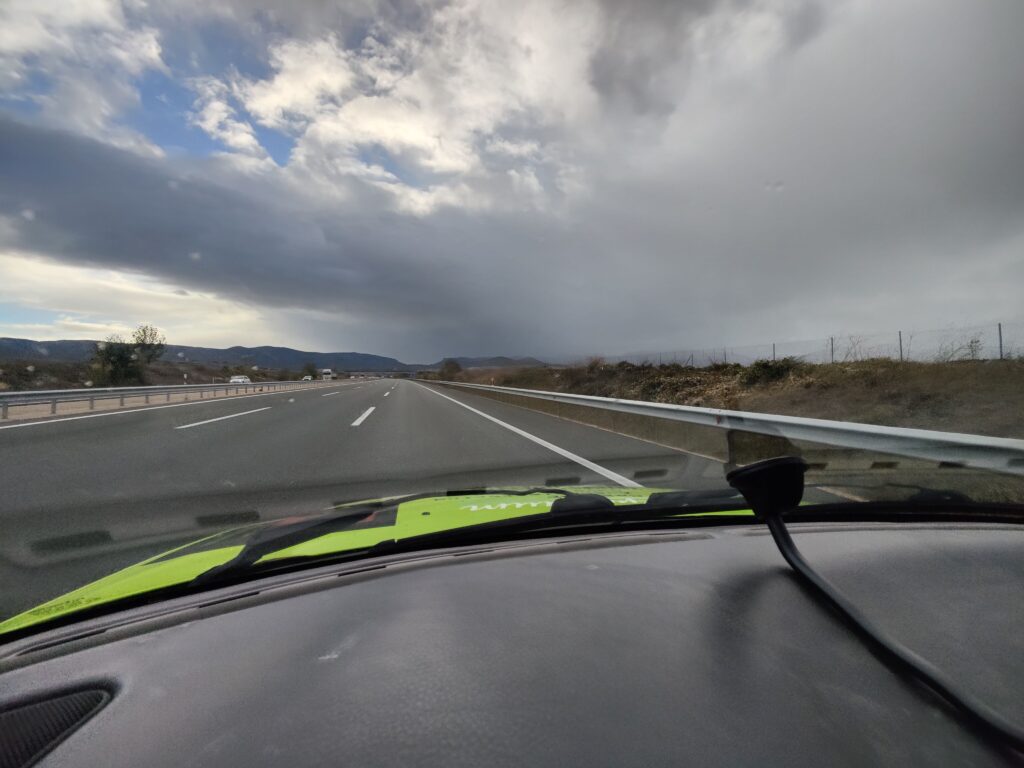
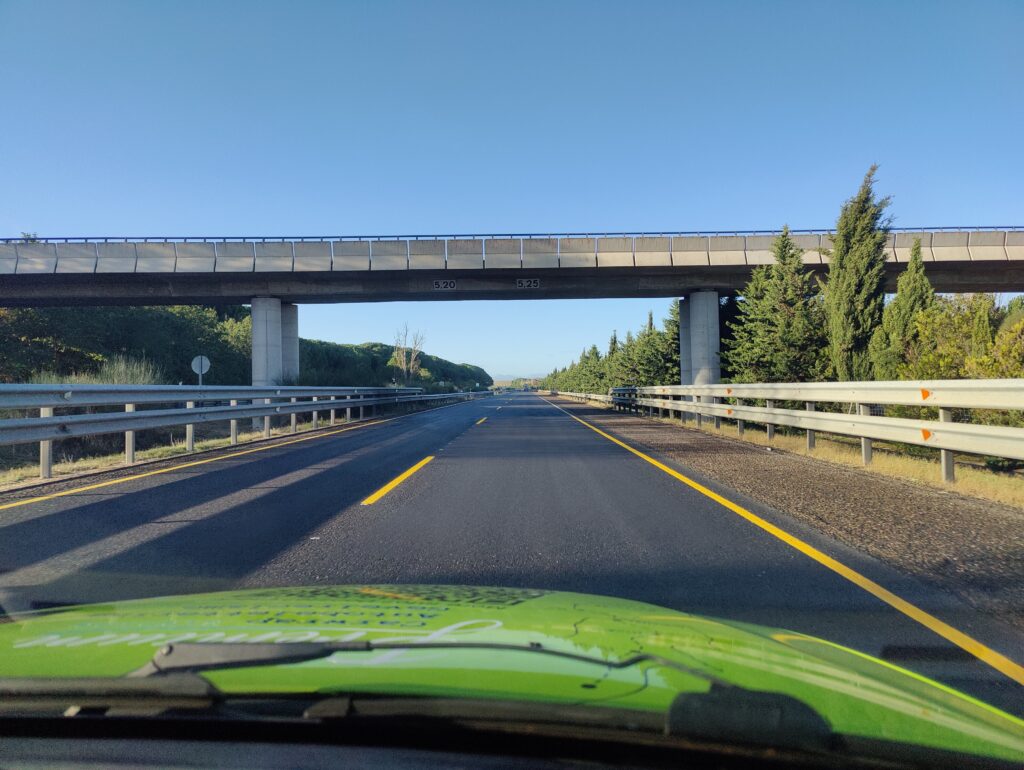

After 1000 km’s of highway we decided to find a place to stay. We decided upon the city of Beaugency, just below Orléans, well past Paris. Turned out to be a good choice, as the town center was nice and we were able to enjoy it for a bit as we walked around for a bit before heading to a restaurant. We continued early next morning.
On to the next 1000 km’s!

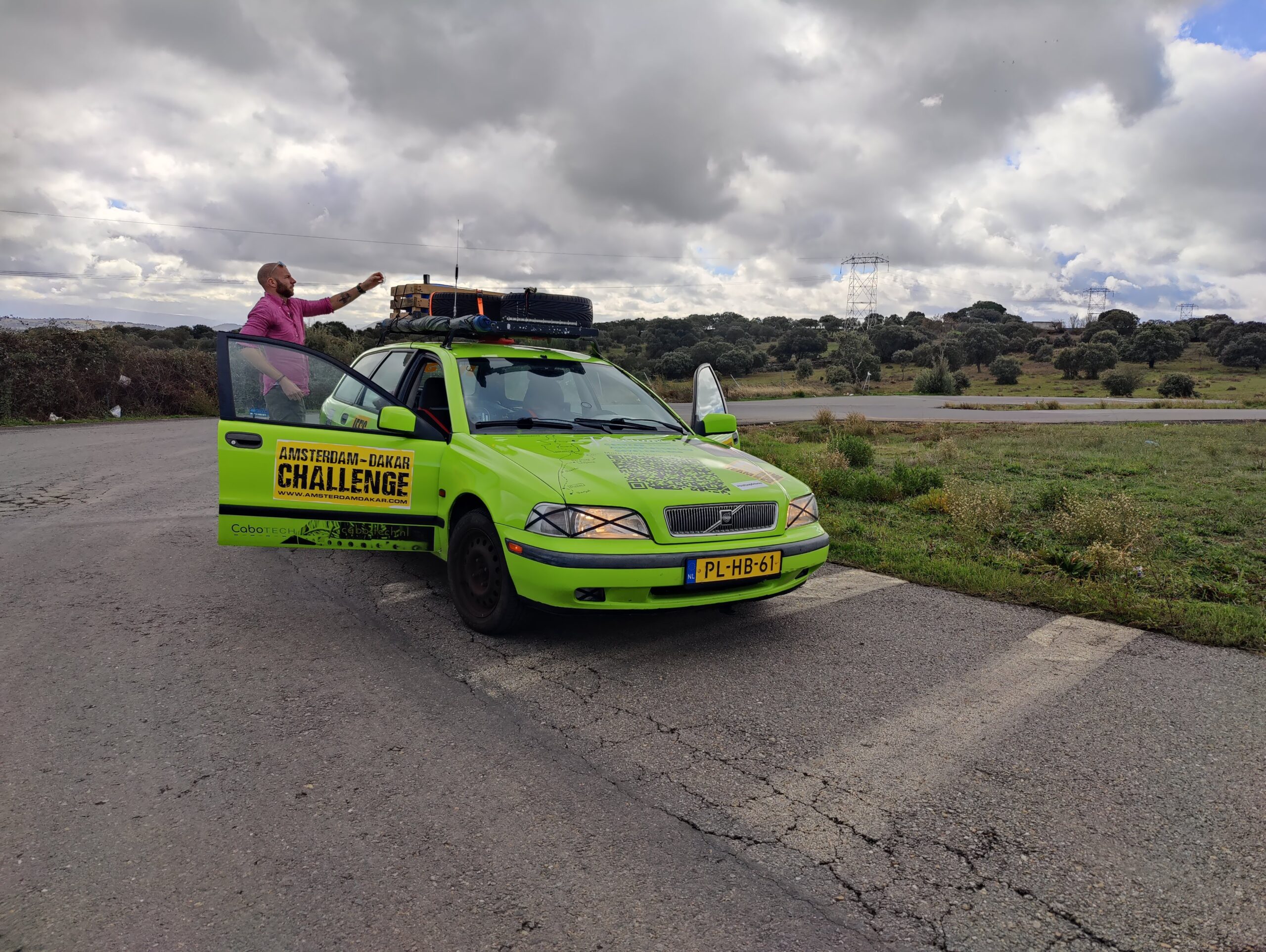
And after 1000 km’s more…
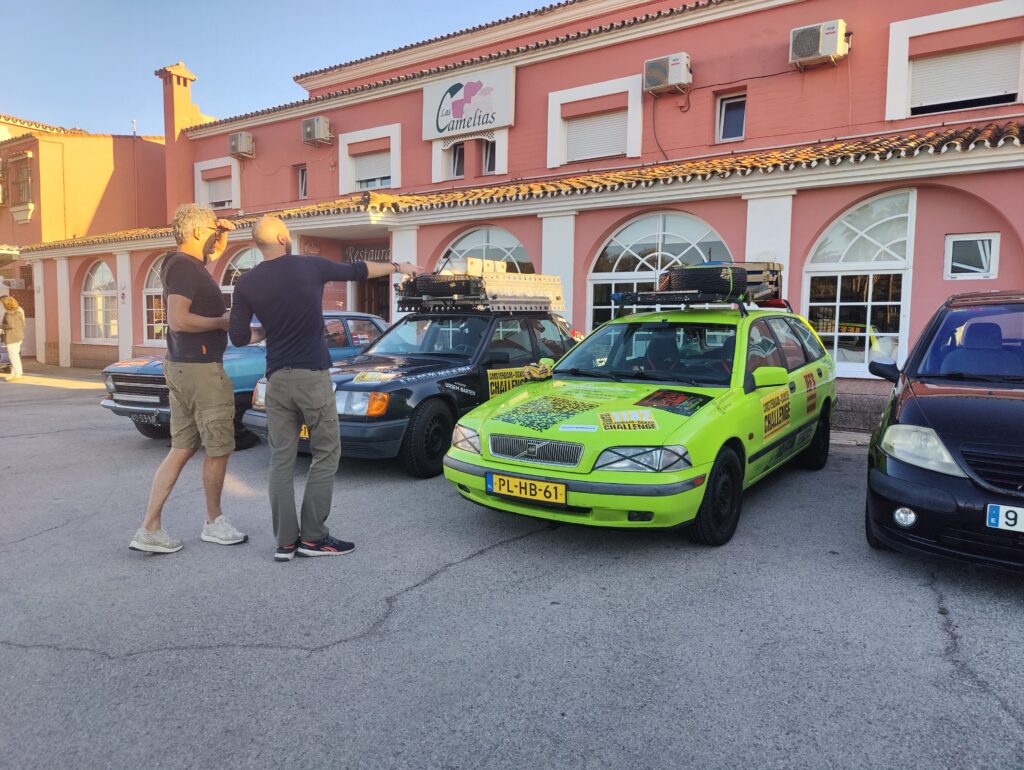
…we arrived at the south of Spain. Discussing cars, roof racks, spare tires and more, we got up-to-speed with the rest of the cars and got ready for the super early departure of our ferry to Morocco the next morning.
Morocco
Driving through Morocco wasn’t quite the breeze… Multiple oil leaks, flat tires and bumper ripped off while being towed for hours on end. Had to get our car fixed by many men in many garages to get it all up and running in the end. After the extreme routes in Morocco, we’re able to say it would survive the upcoming desert.
Meetup after the ferry early morning.

And continued into the Rif Mountains followed by the Atlas Mountain range. Beautiful views with a bit of green, a little frost here and there left from the freezing colds at night at those heights and some lookout points. No troubles at all and continued with a breeze though the north of Morocco.
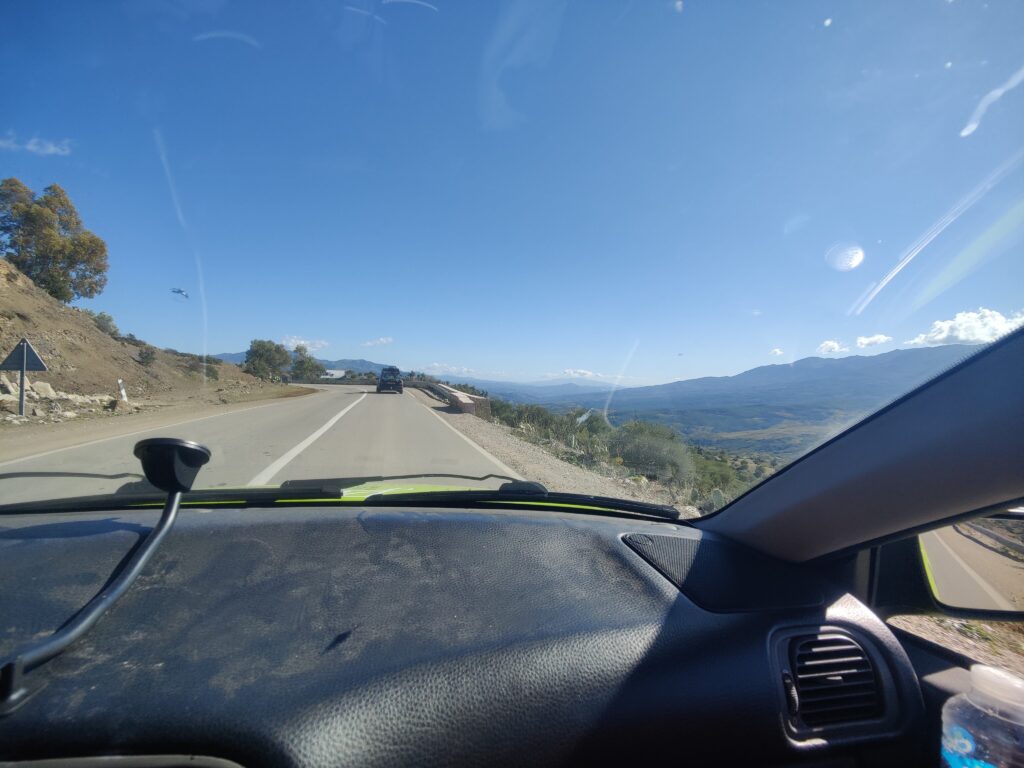
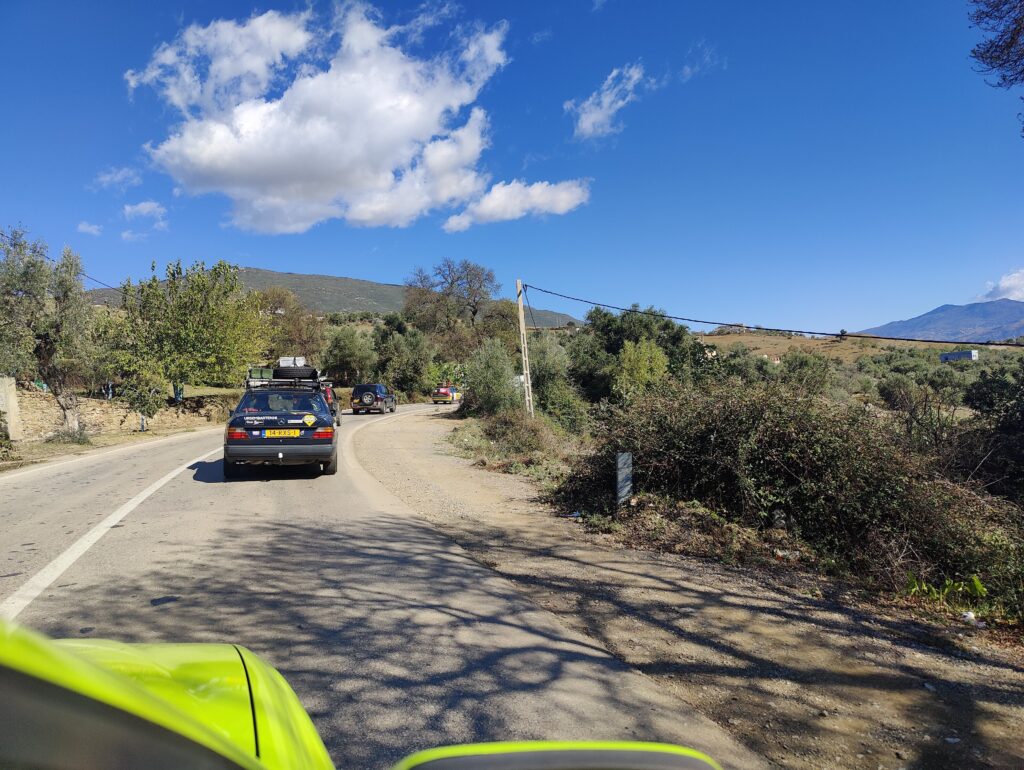
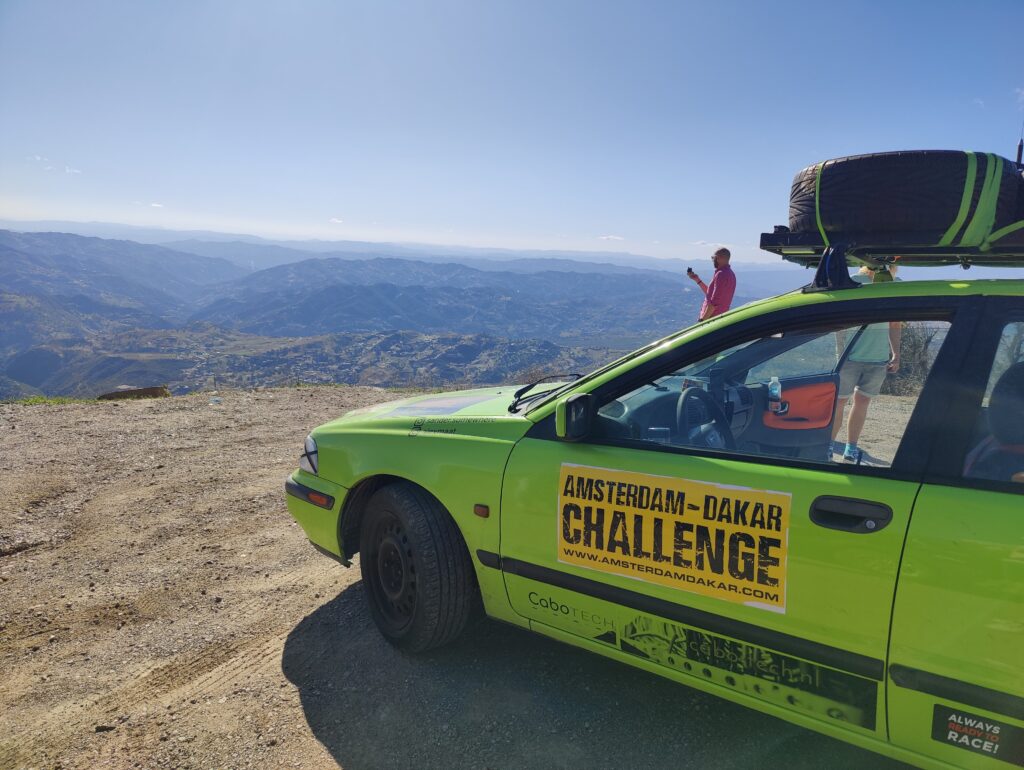
Arriving in Fez at sunset. “Fez is booming” as our guide book told us.
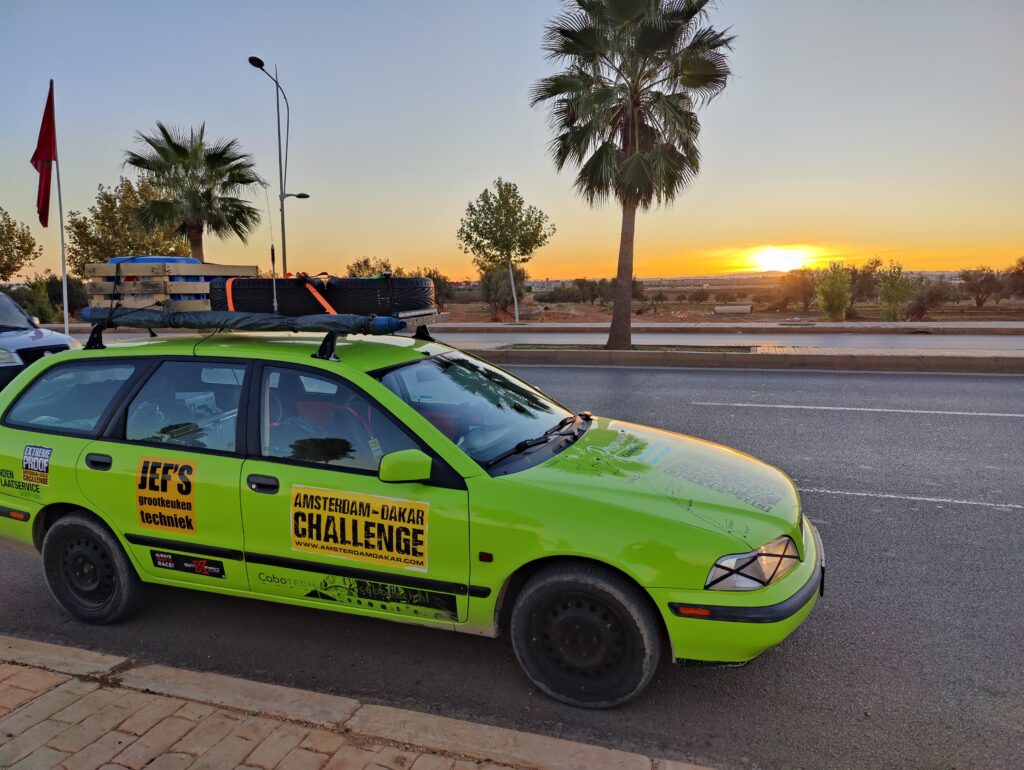
From here we’d enter the dryer regions of Africa. More stones, less green and more sand. We continued down south.

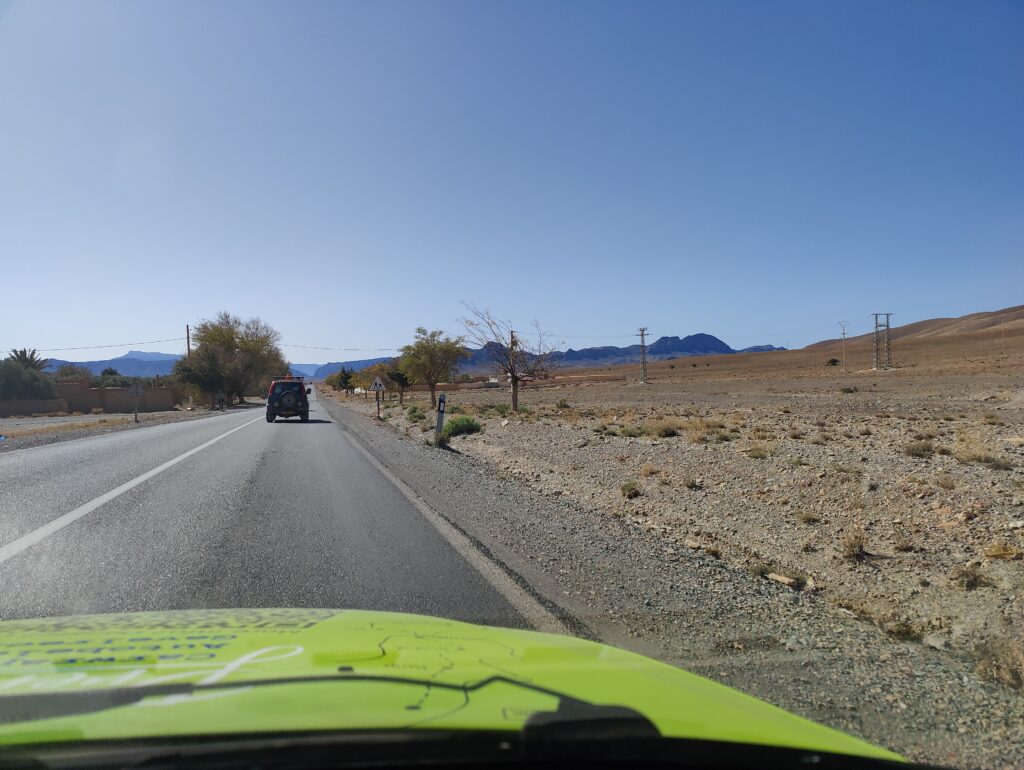

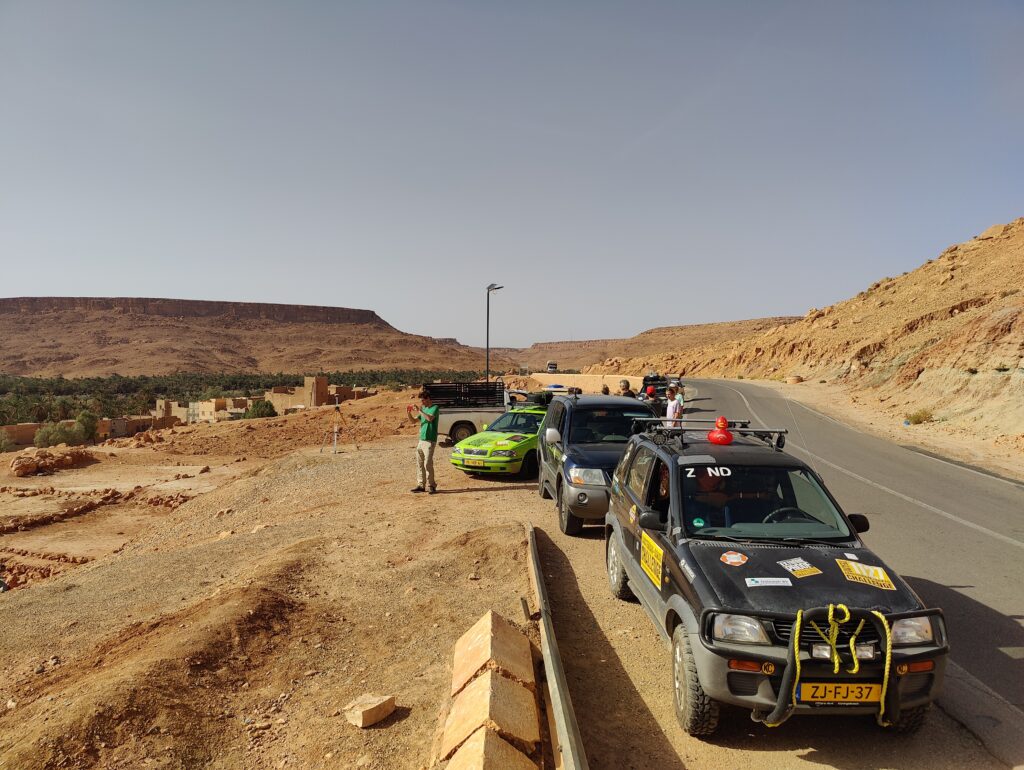
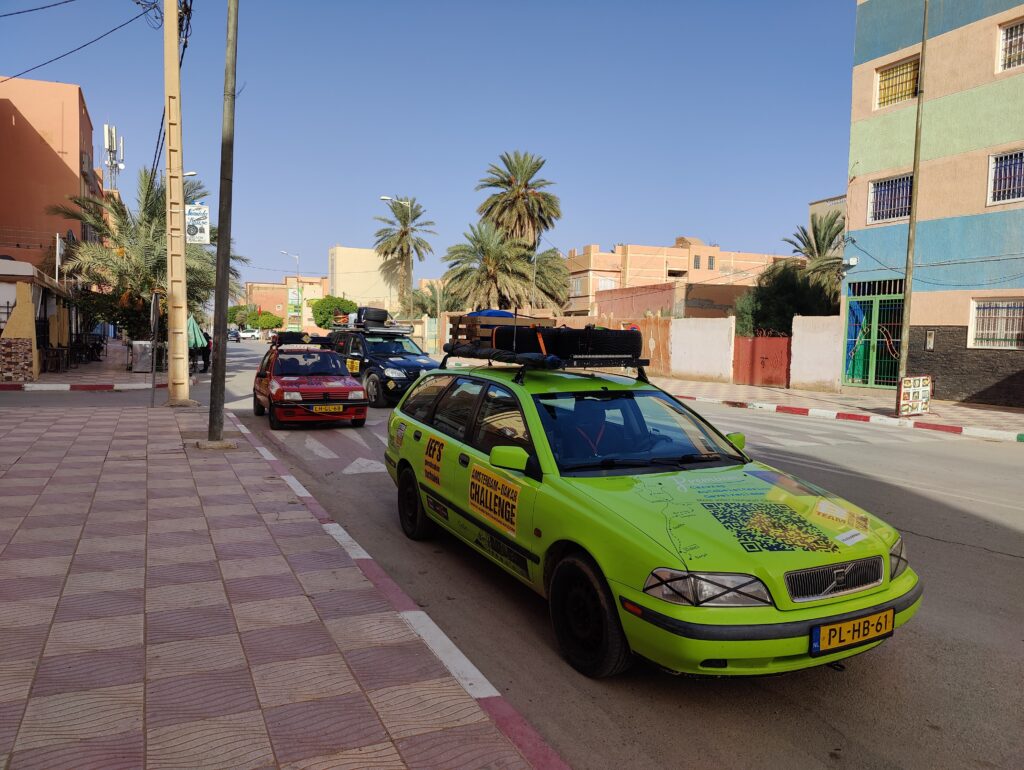
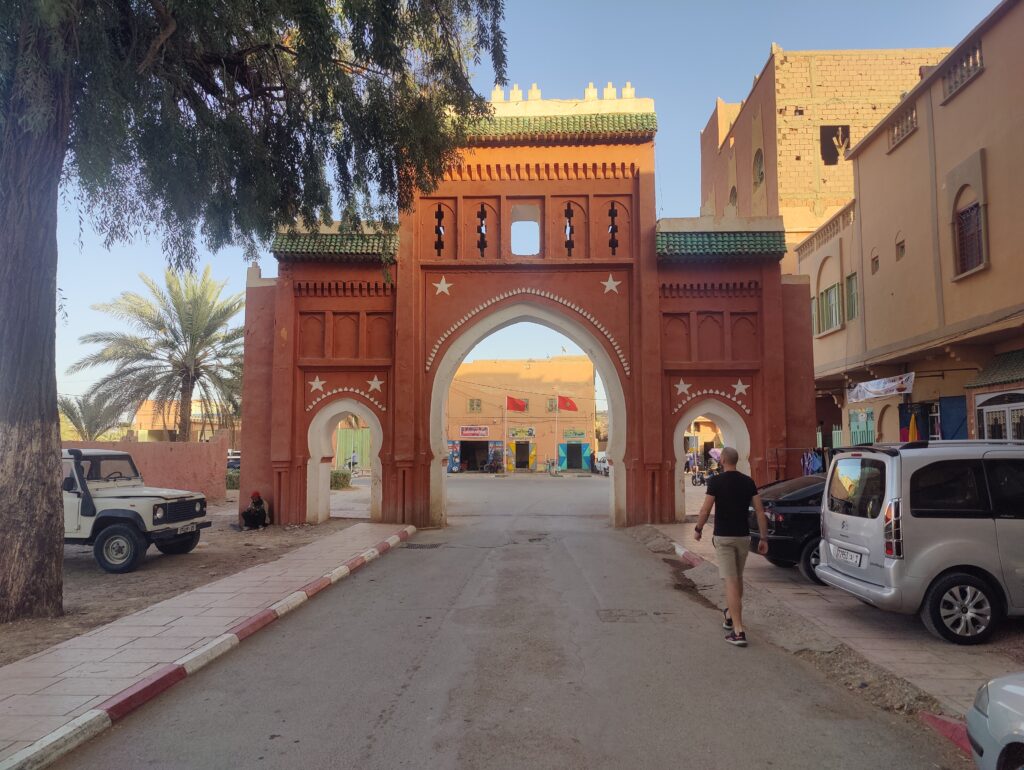
Arriving at dusk in Merzouga. First time “off-road” and entering a desert with our car. It held up quite well. Until then…


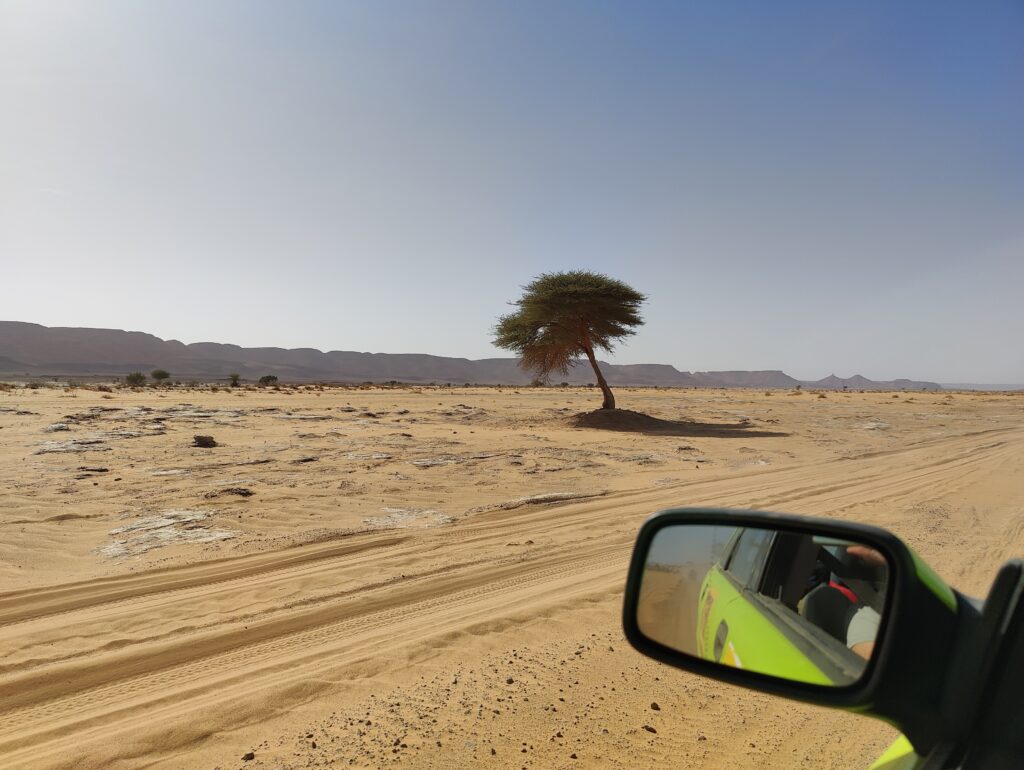
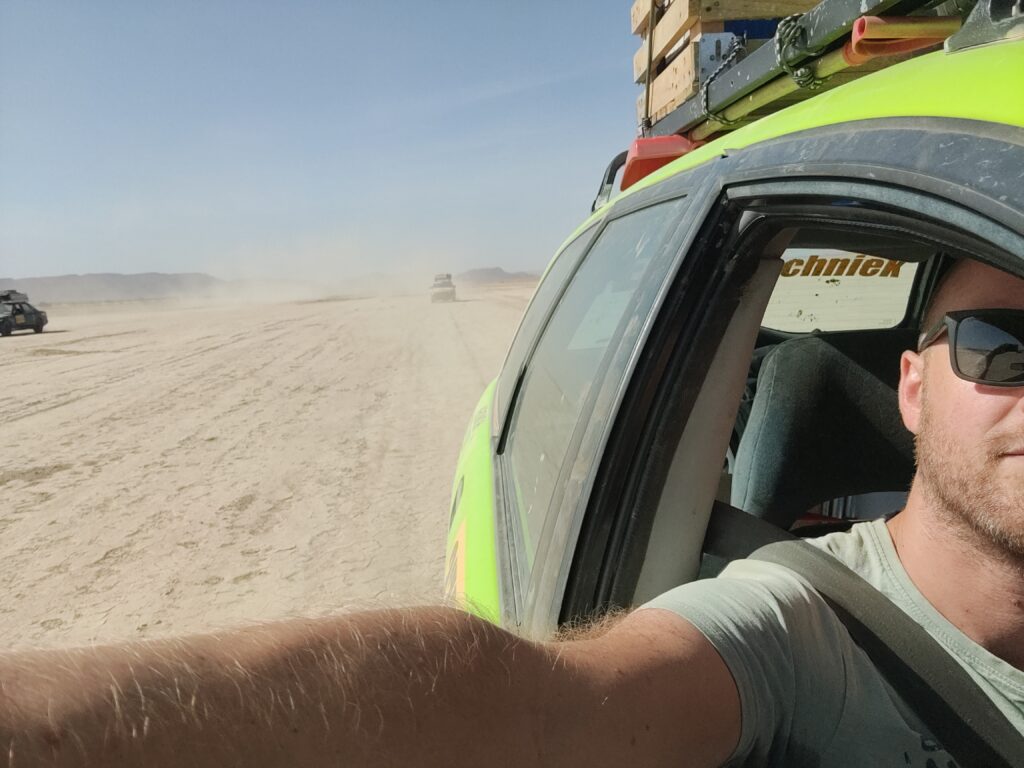
We got our rear bumper ripped off, but since you don’t actually need it, we mounted it on the roof rack and got it reattached later on.
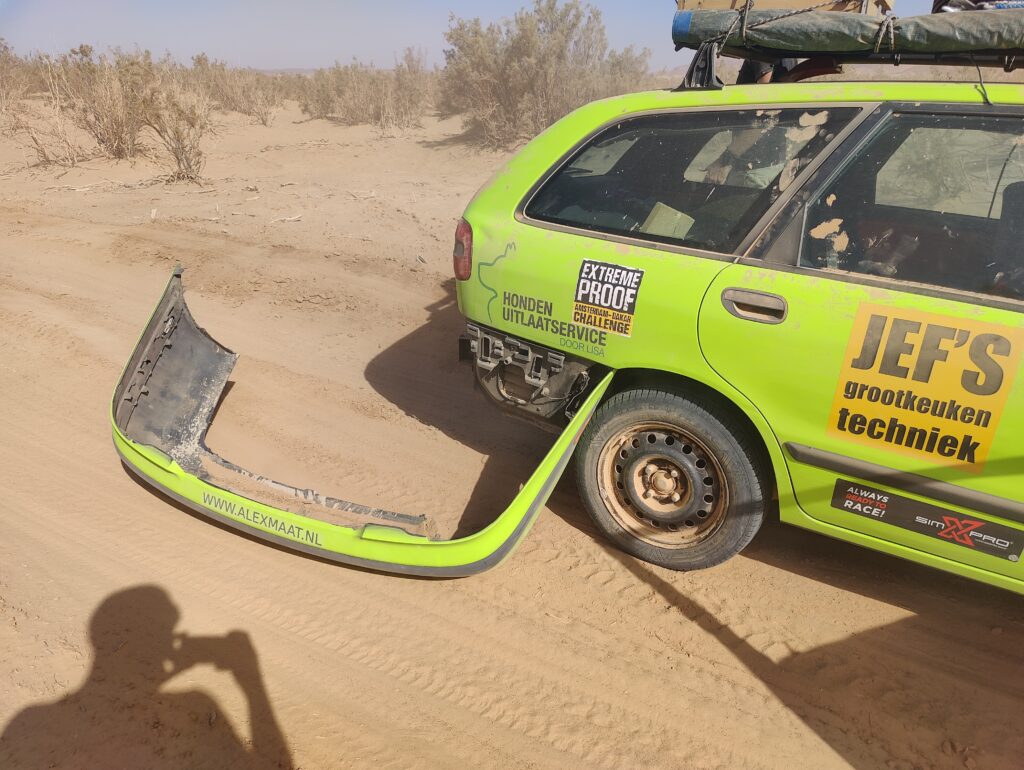
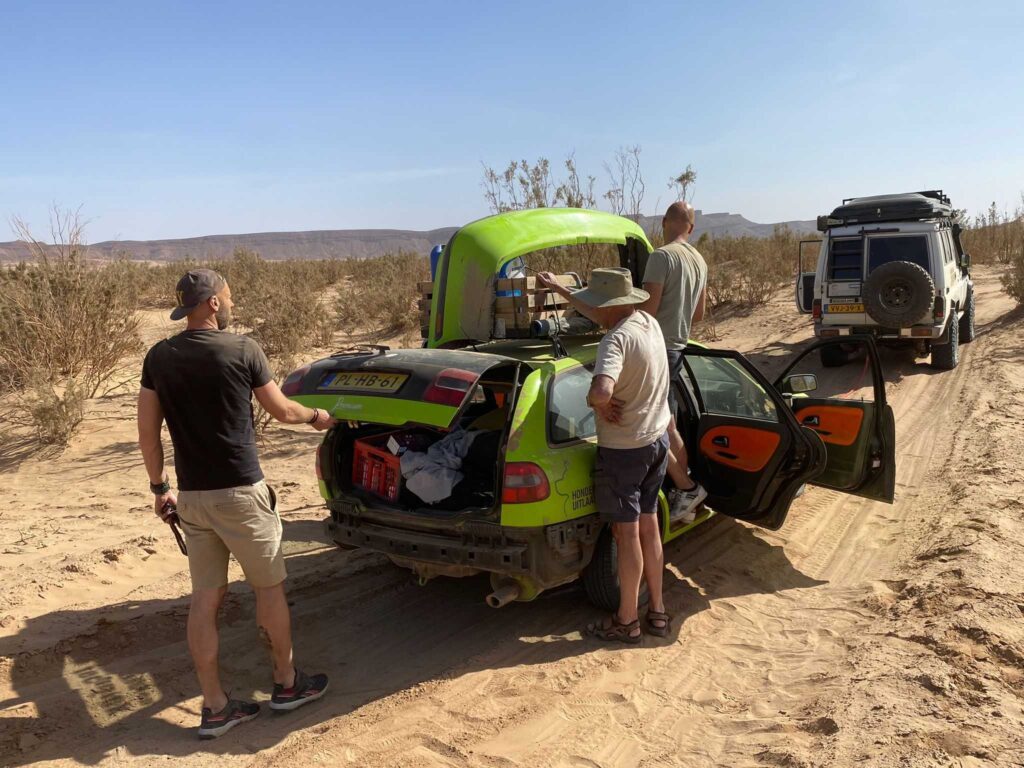
Broke down again while getting towed, had to fix a flat tire. Meanwhile we’ve put the bumper in the back of the car for improved aerodynamics.
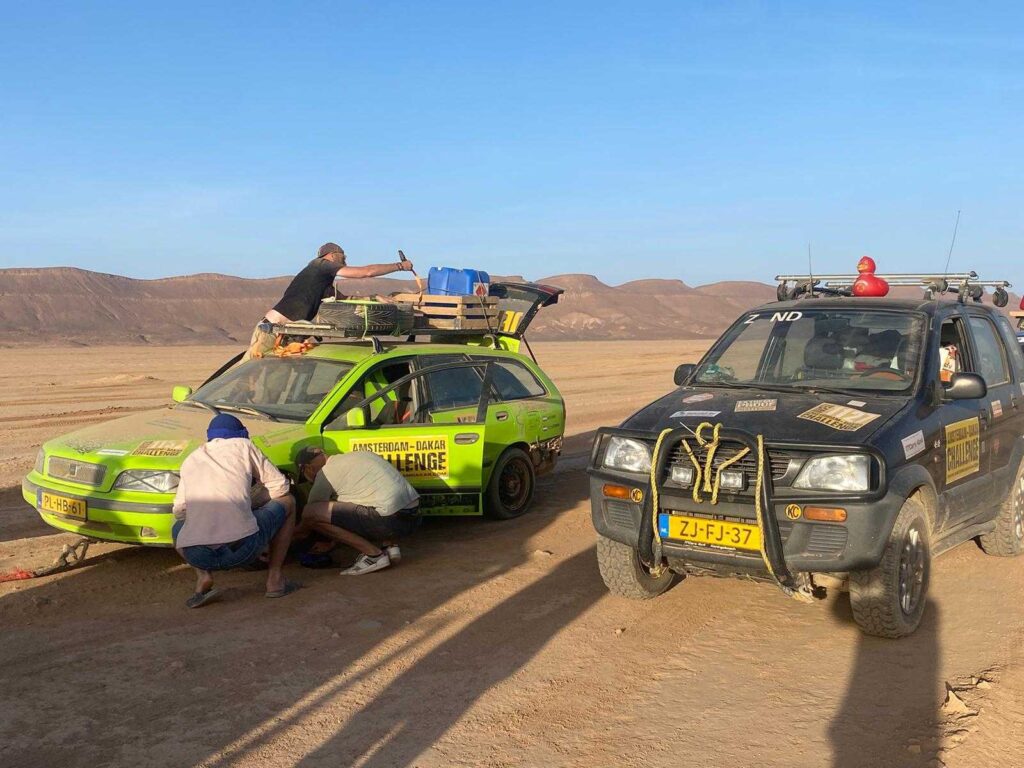
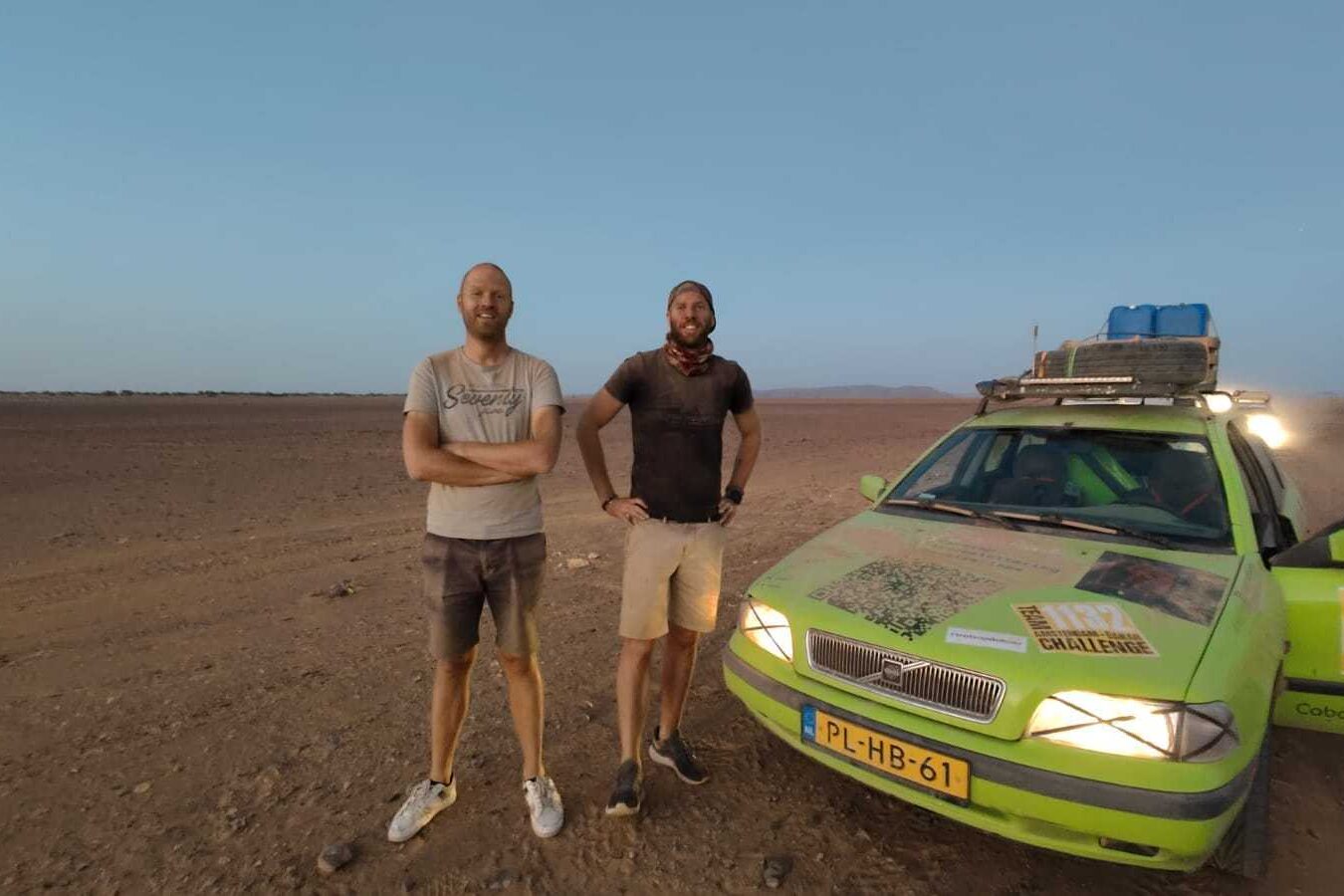
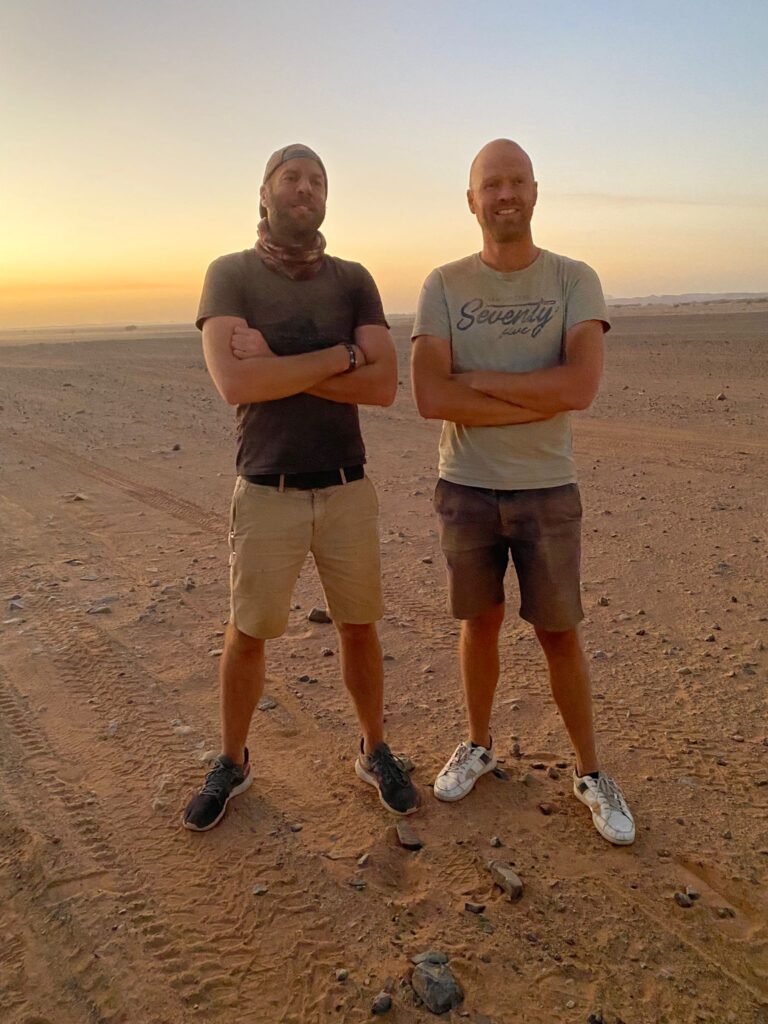
Got towed into the night with only the tail lights of Piet’s car guiding us and pray we won’t bust our car on some rocks. Which of course happened. Another two flat tires.
What we soon learned however, was how our thin piece of sheet metal protecting our engine wasn’t nearly strong enough to withhold any stones or rocks hitting our car from the bottom and since our car was already low, we broke the oil pan of our carter… Twice! We then had to be towed to the nearest town to get our carter fixed, get new carter protection (a thick steel plate) and get our car raised higher off the ground. Which is what we did.
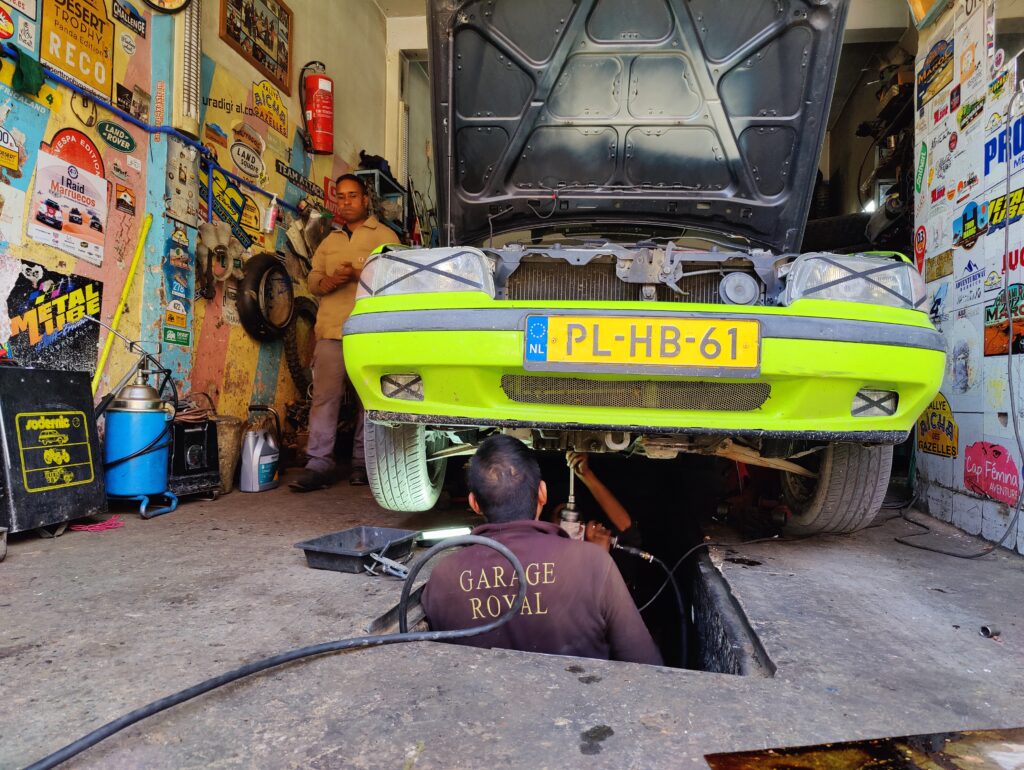
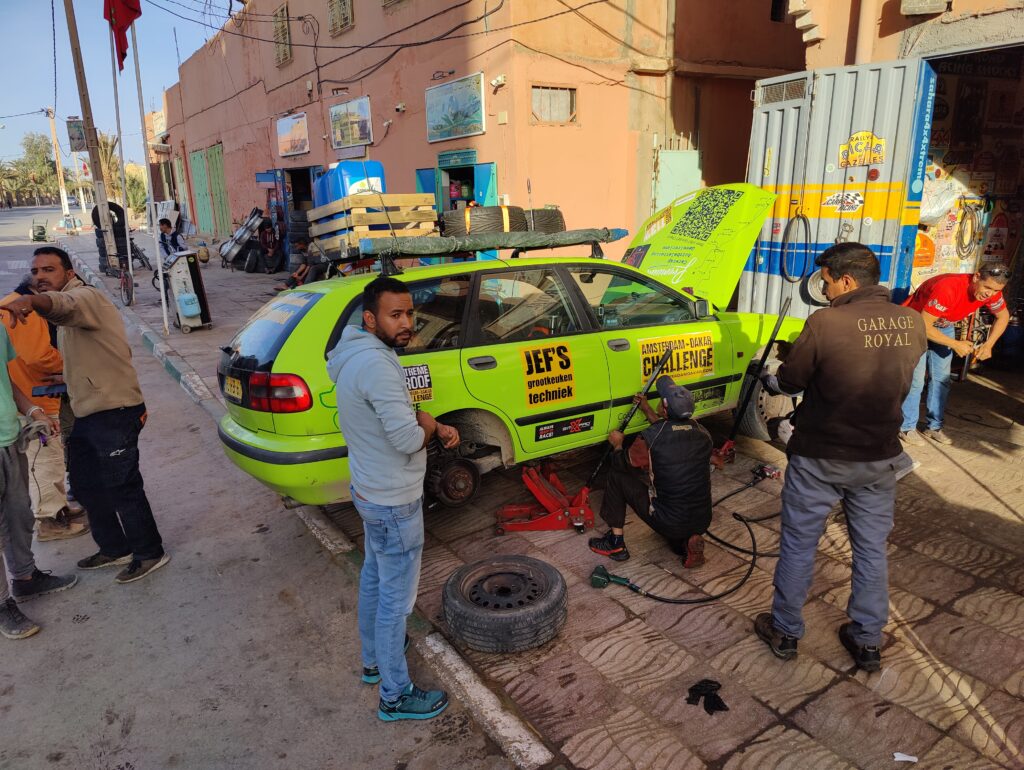
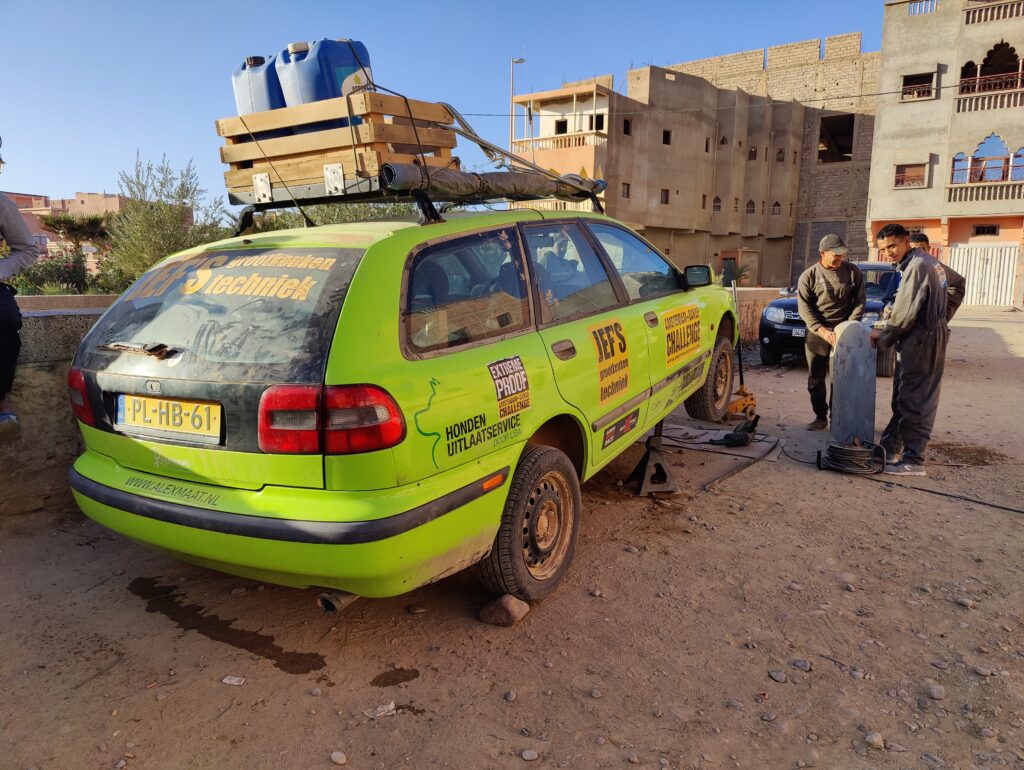
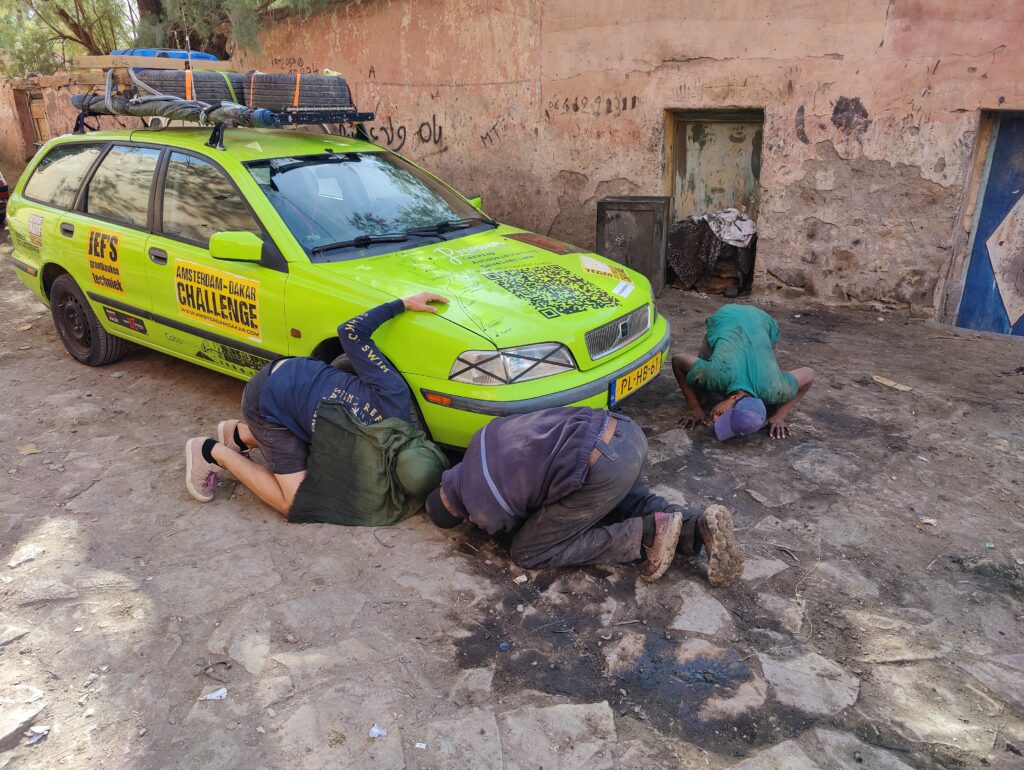
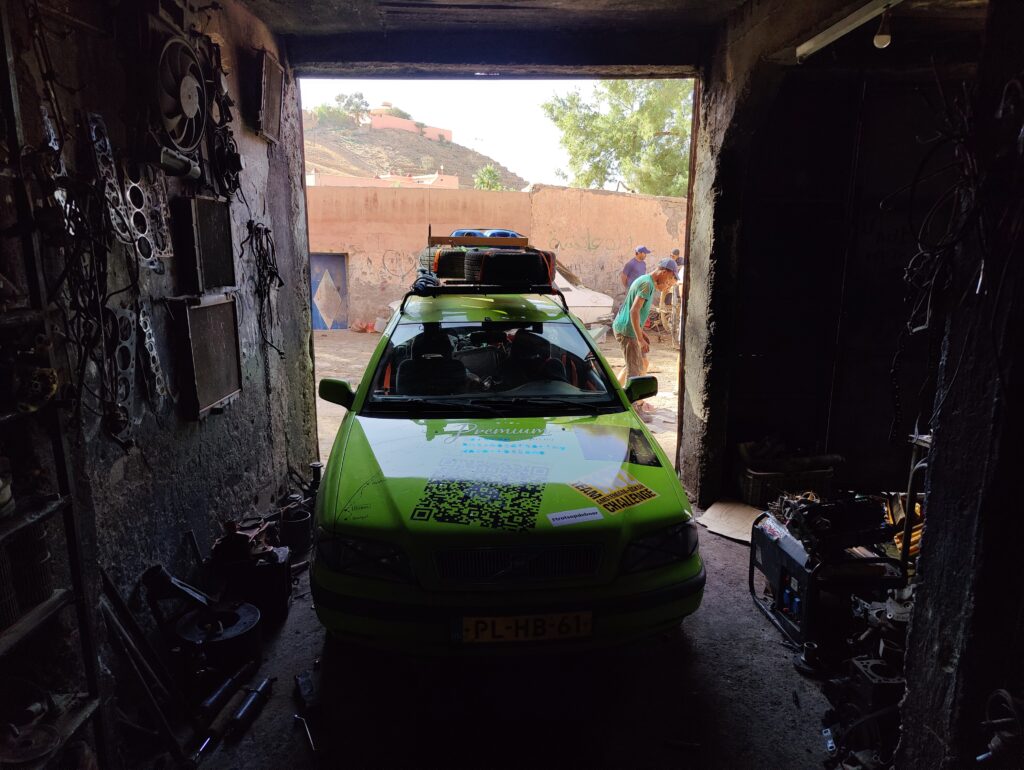
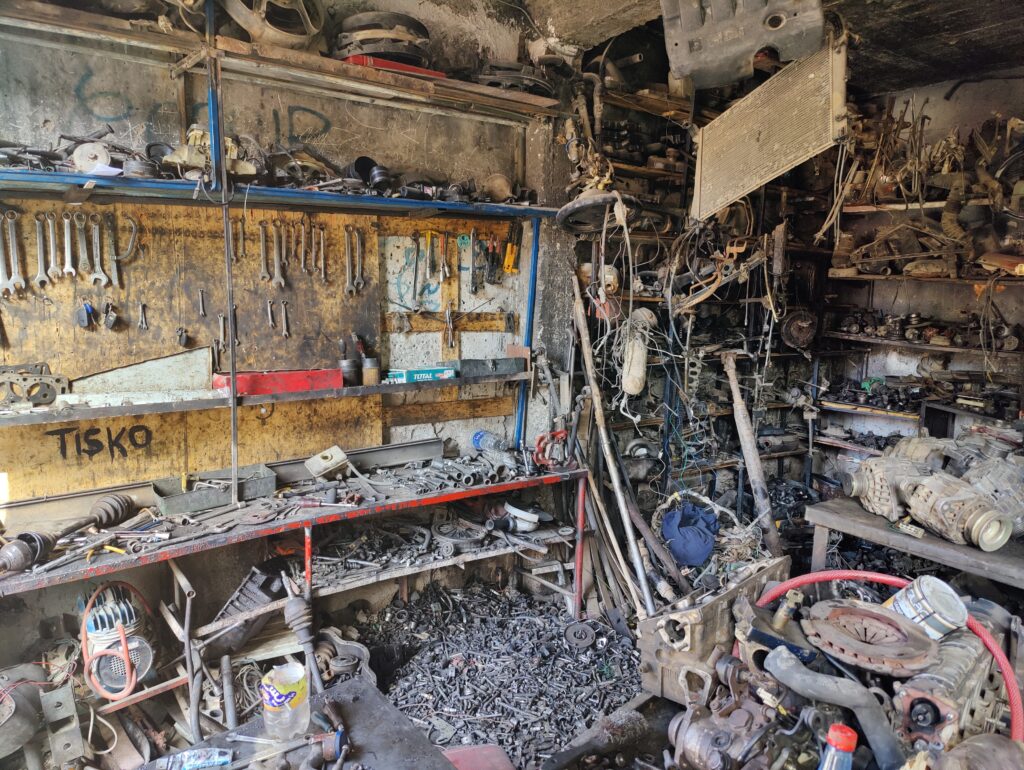
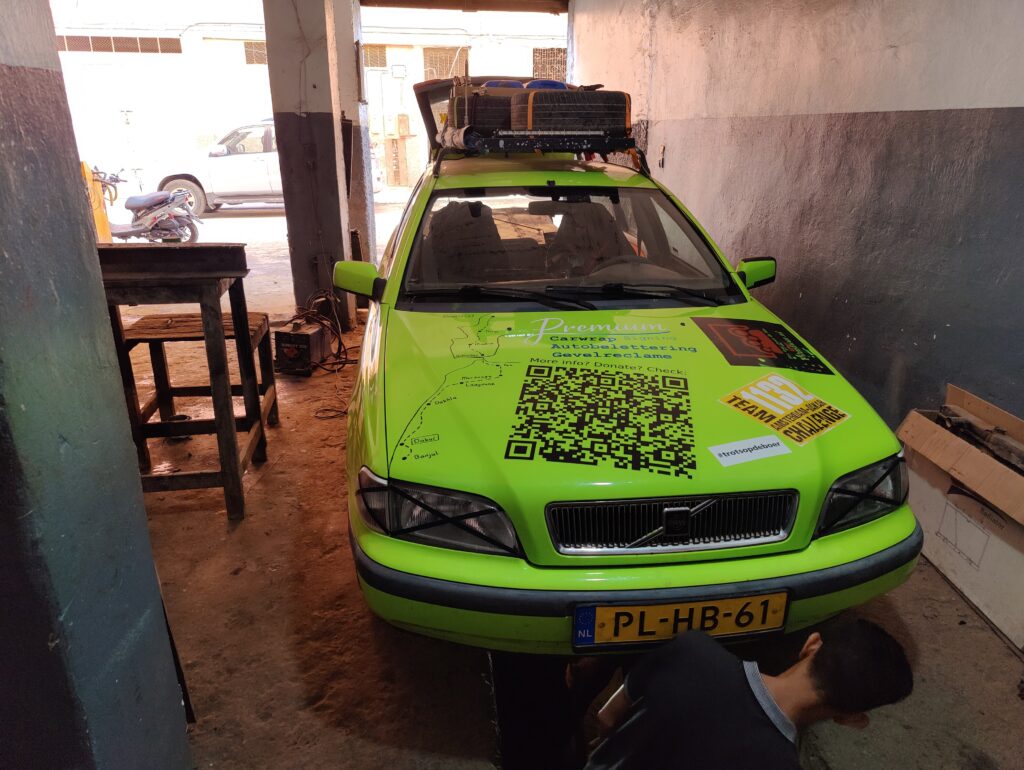
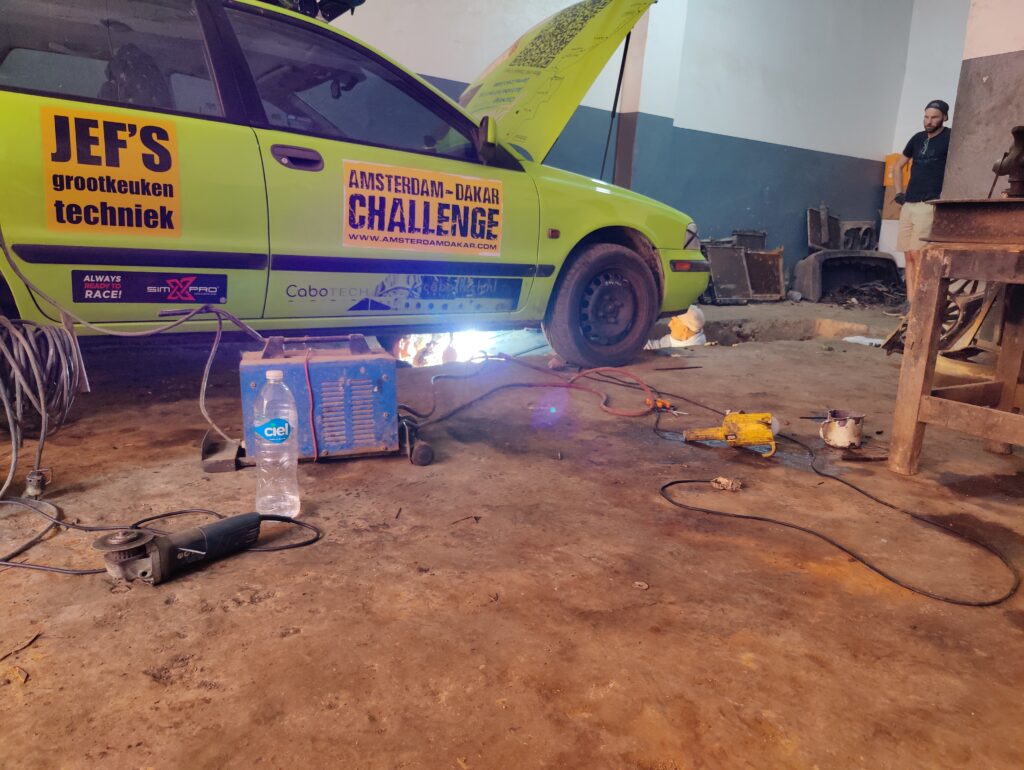
Raised the car in the front as well as in the back, having fixed the oil pan twice and giving it some extra carter protection with a thick steel plate this time, we were ready to continue without any engine related problems.
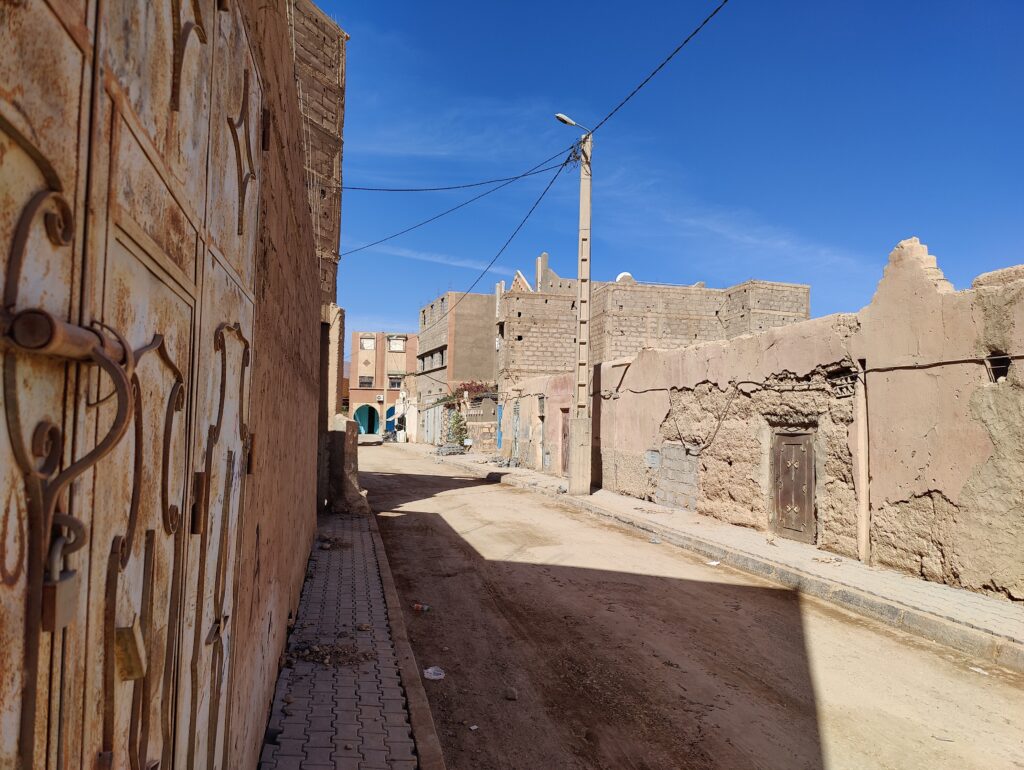

We’ve made it to the border of Western Sahara. Onwards to much more heat and sand!
Western Sahara
Driving through sandy dunes. Tires at 0.85 bar. Windows open. Skidding away on loose sand.
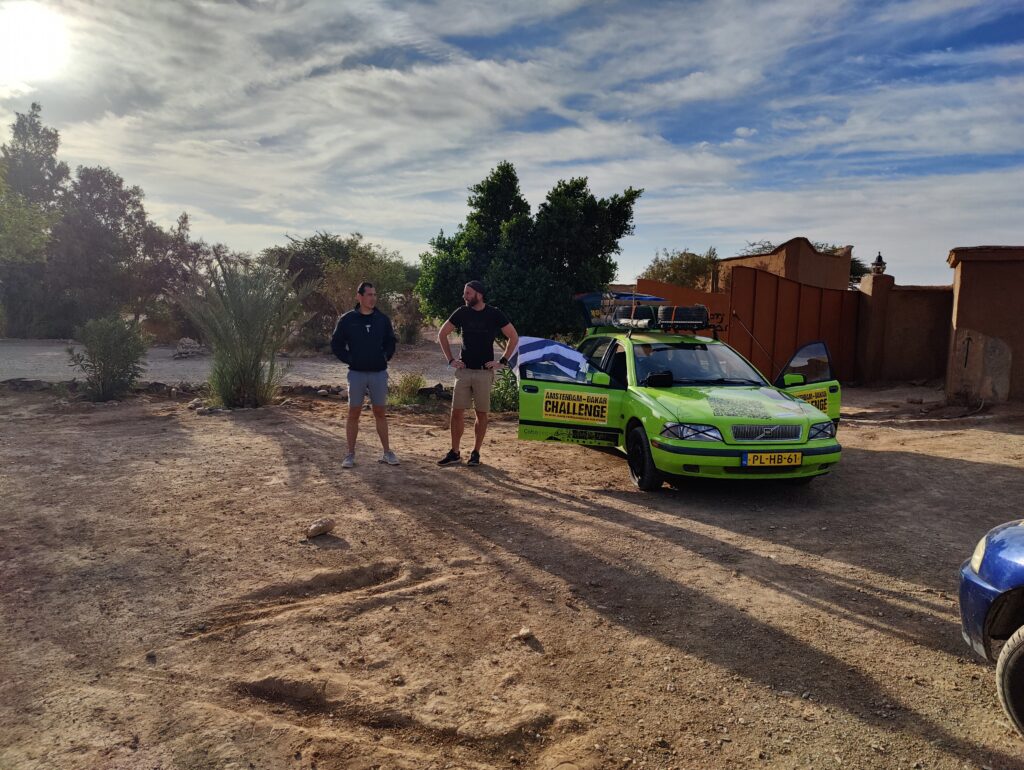
Where the Western Sahara is contested territory and has a dotted line on Google Maps, it was still something to be able to make it this far. From here on, much more desert to come.
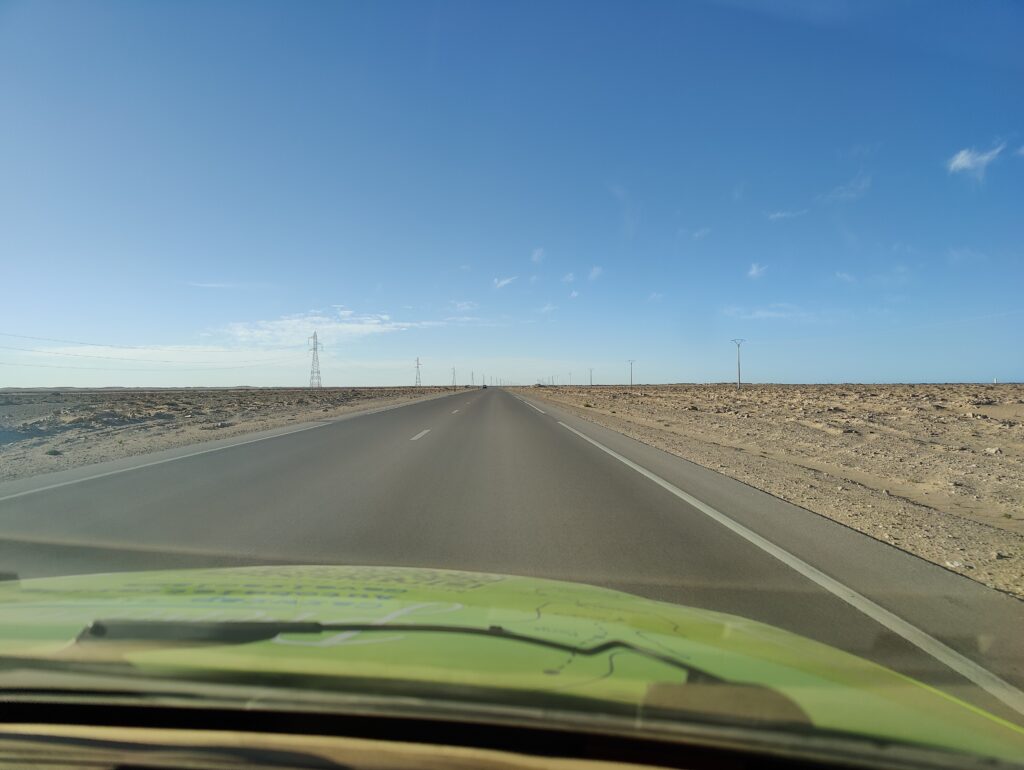
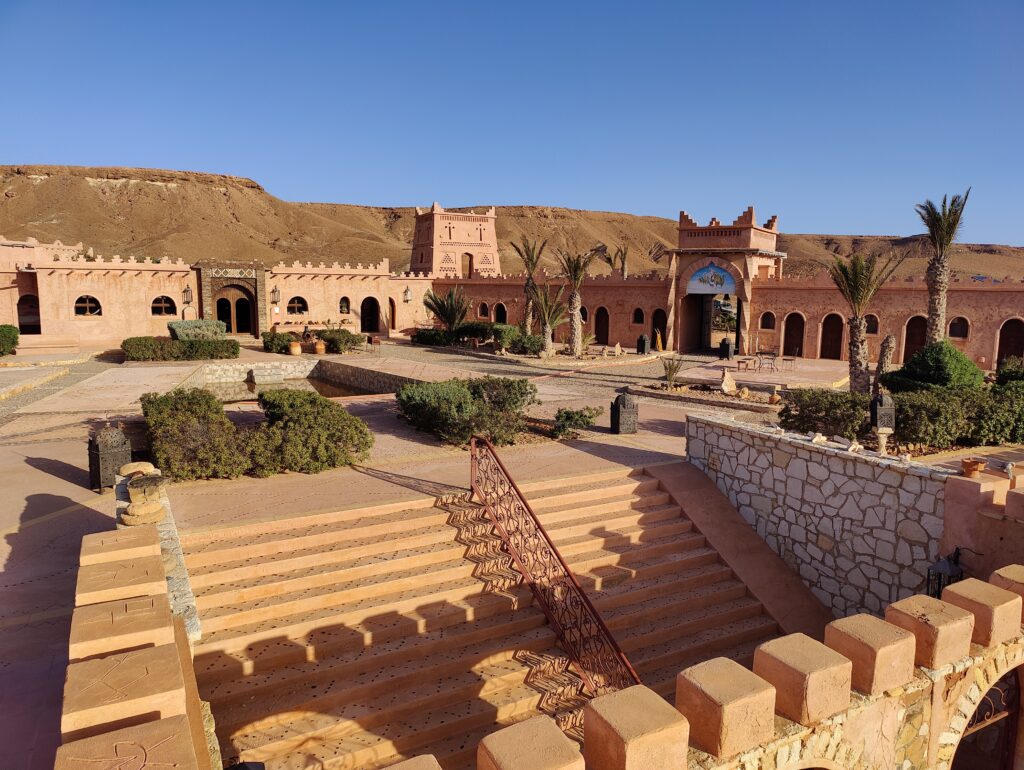
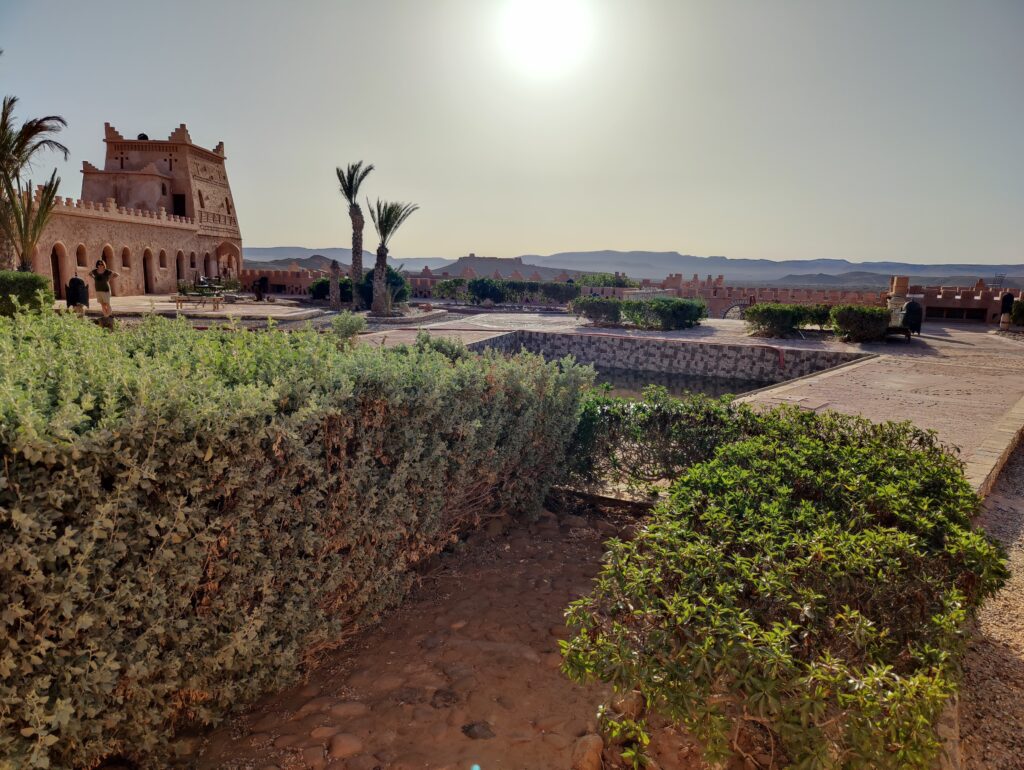

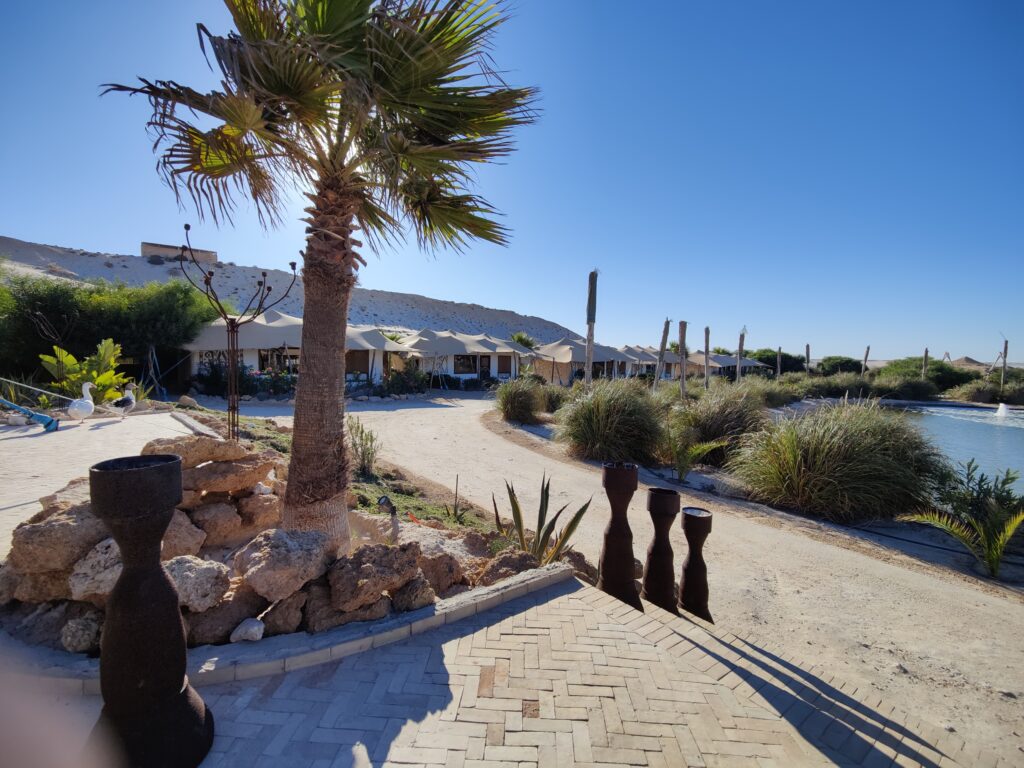
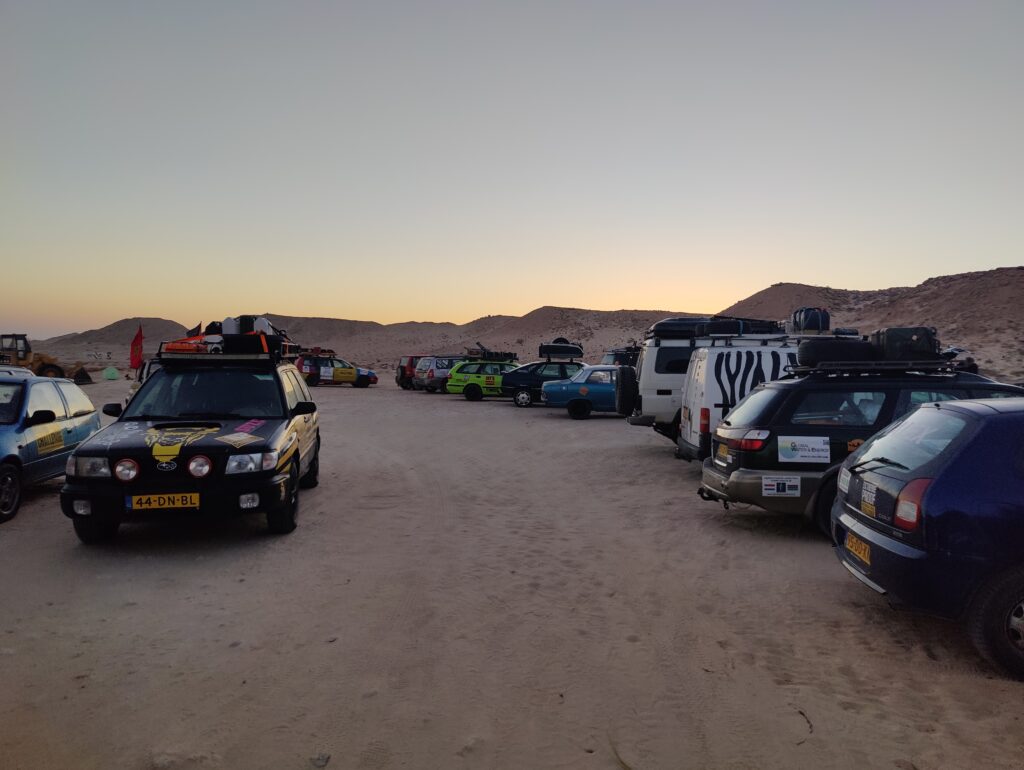
Continuing south without problems for a while now. Where these few days were still near the coast line with occasional water here and there, after continuing more and more south, things were getting even more dry and brim. Sahara settlements were colourful and mostly in the middle of nowhere. Sleeping in rooms and big traditional tents was nice, as there was still running water.
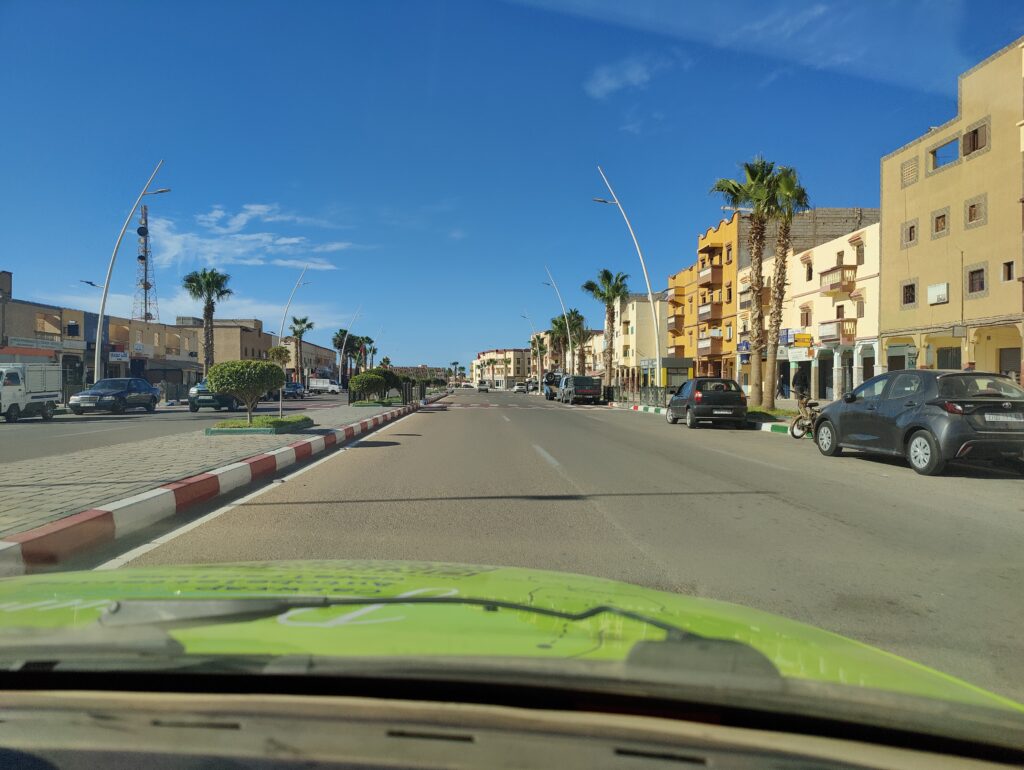
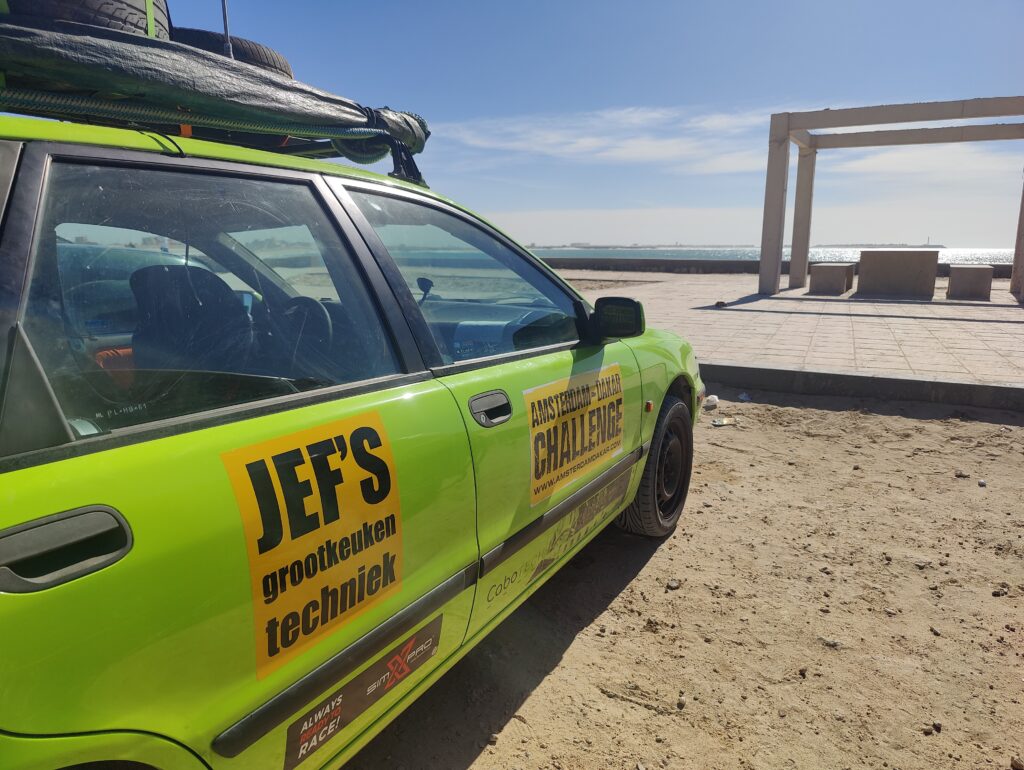
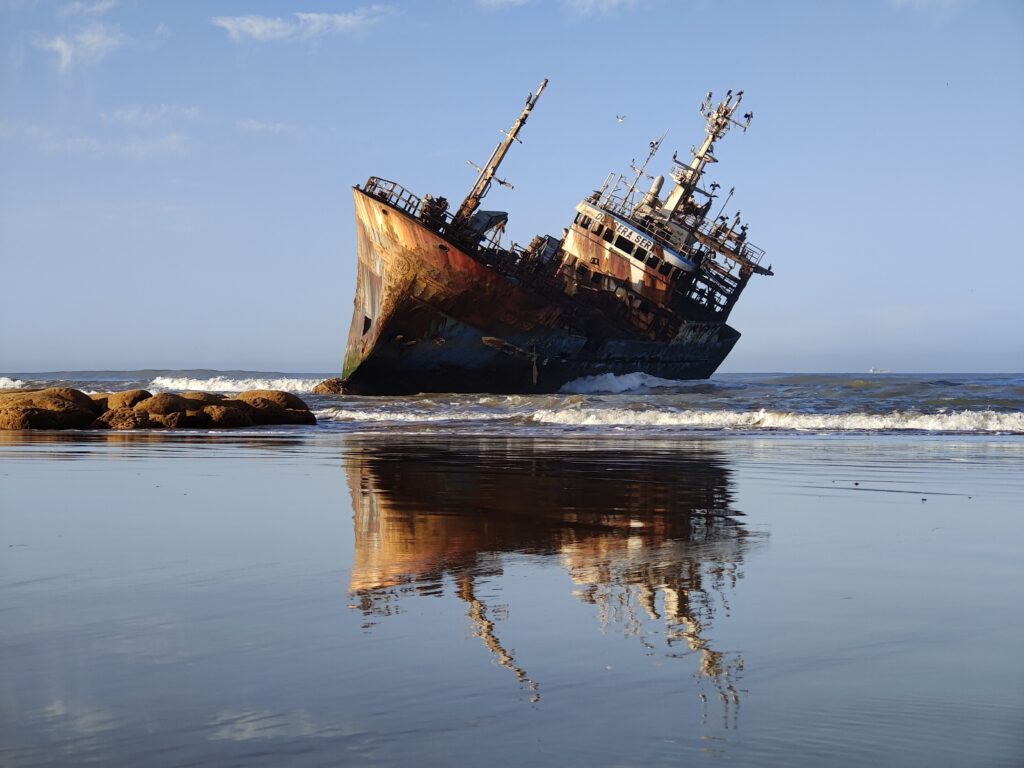
Famous ship wreck at the coast of the Sahara. Very interesting to see that it stays put and how it is still in this condition. Next up: filling Kermit up and our jerrycans with petrol for Mauritania the next morning.
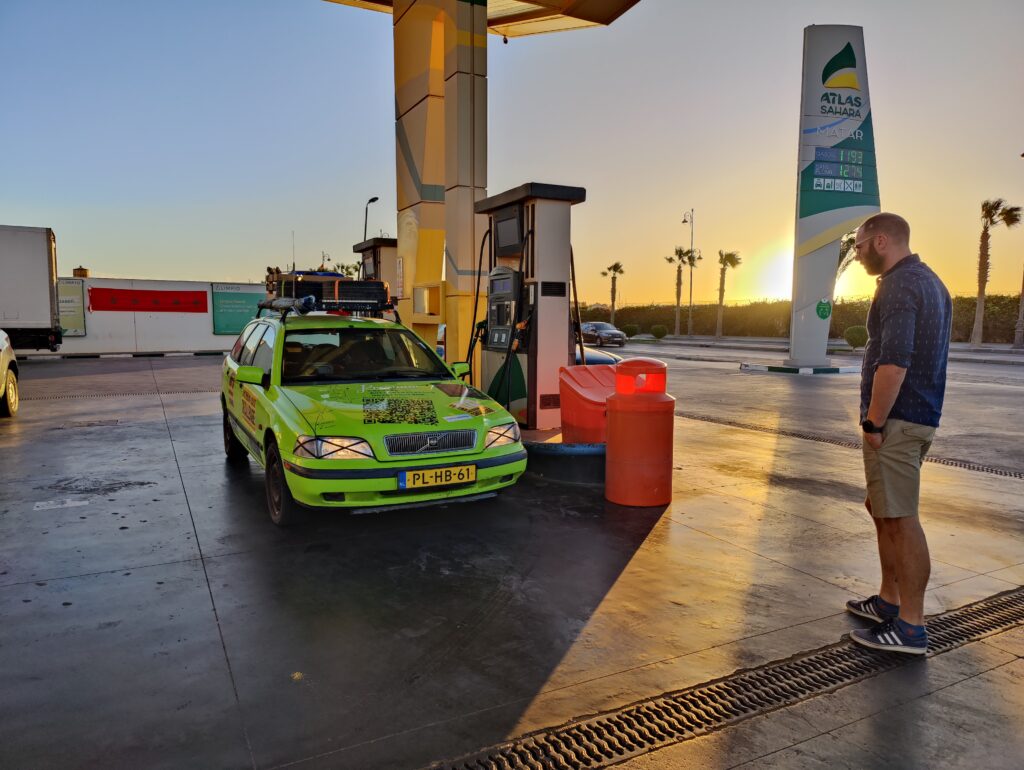
Auberge for the night. Some beers at the bar and an early night, because we’d have to get to the border of Mauritania at a set time as our “fixer” will be there early morning, as it is known it takes the day to cross it.

Mauritania
Less colour, more sand. A little bit further inland towards the middle of nowhere. Sleeping in the desert. Campfire. Stars at night.

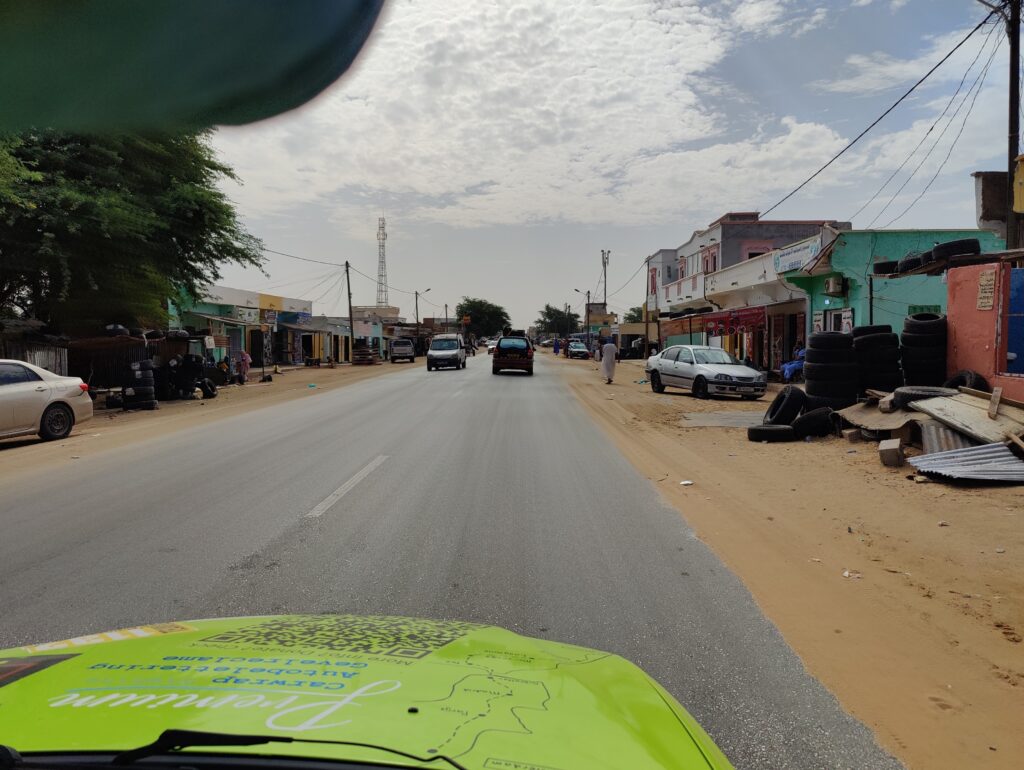
Waking up way too early to get to the border on time. Colour disappeared from our life. All cars on the roads became wrecks. 50% of cars was an old Mercedes which has given its last breadth at least 15 years ago. Not a single car which didn’t produce some kind of smoke.
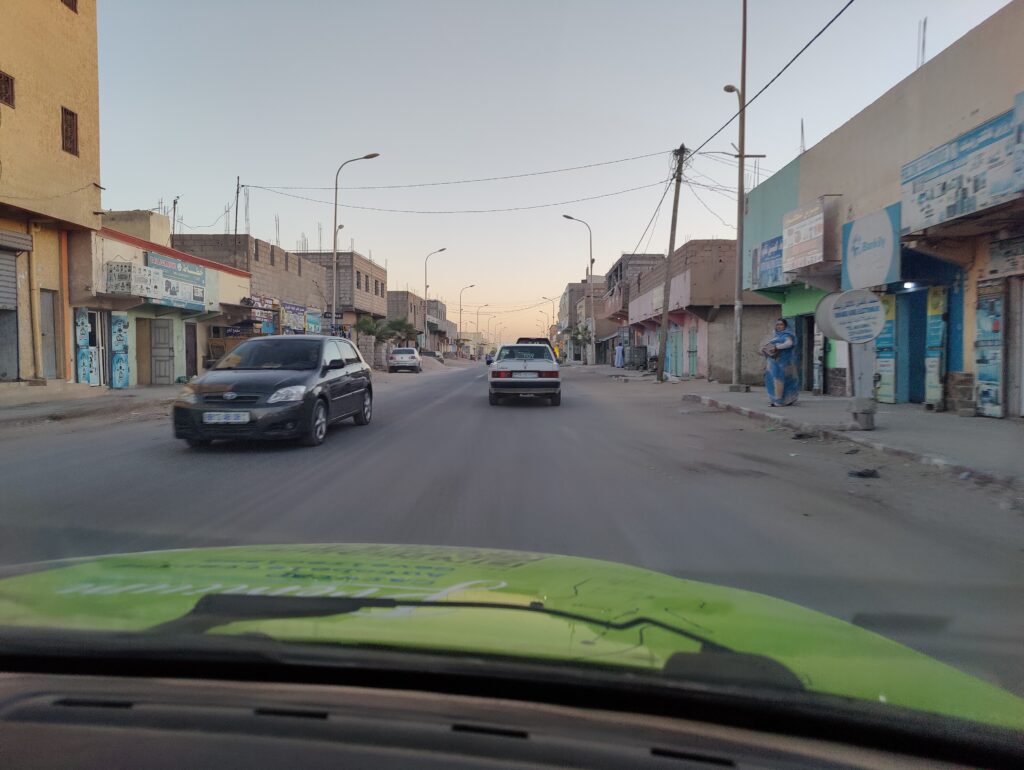
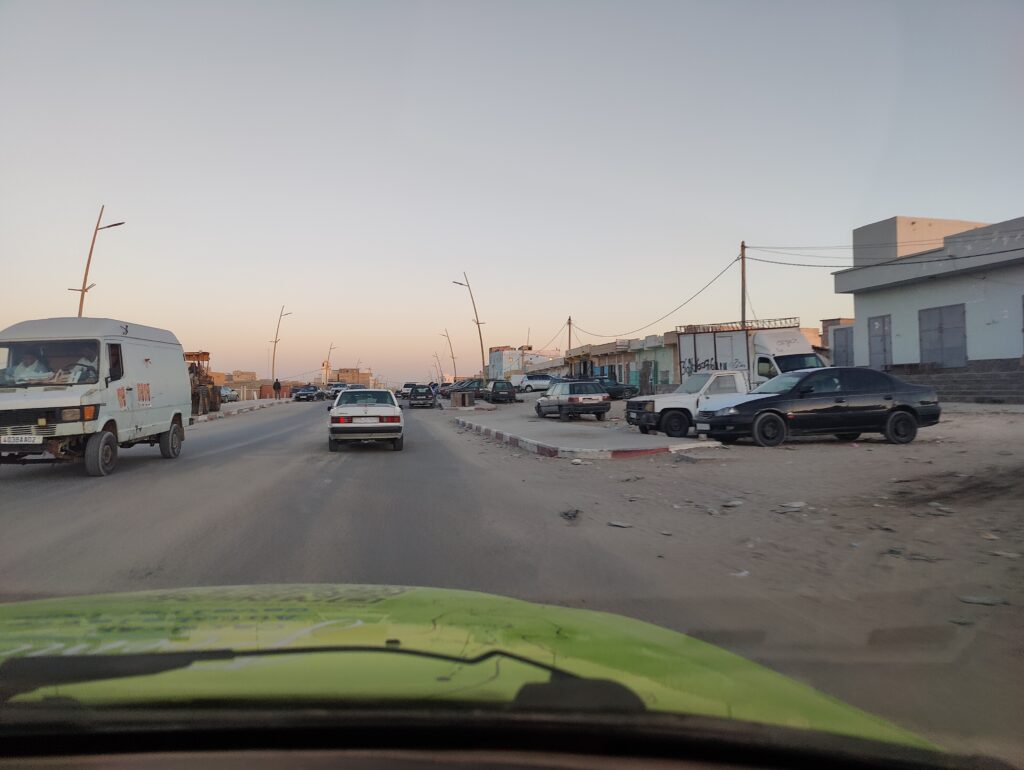
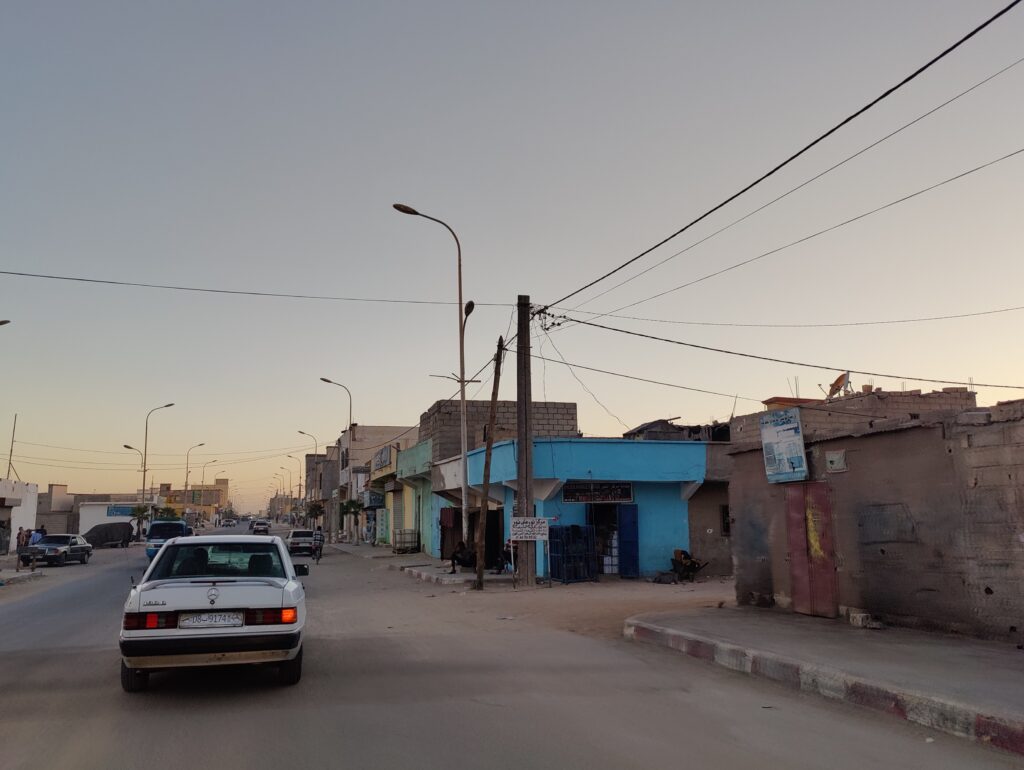
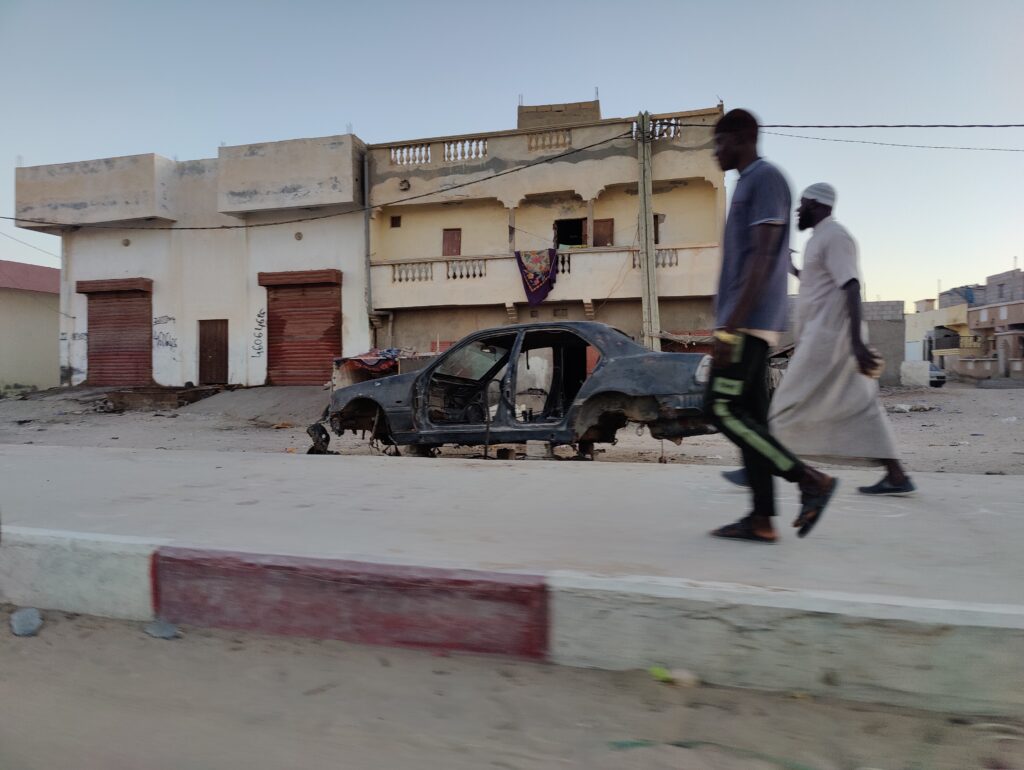

After getting used to the atmosphere in Mauritania, we headed off into more desert. A guide joined us for the whole of Mauritania and we were continuously escorted by an army pickup truck to guard our safety. Next up: camping in the desert!
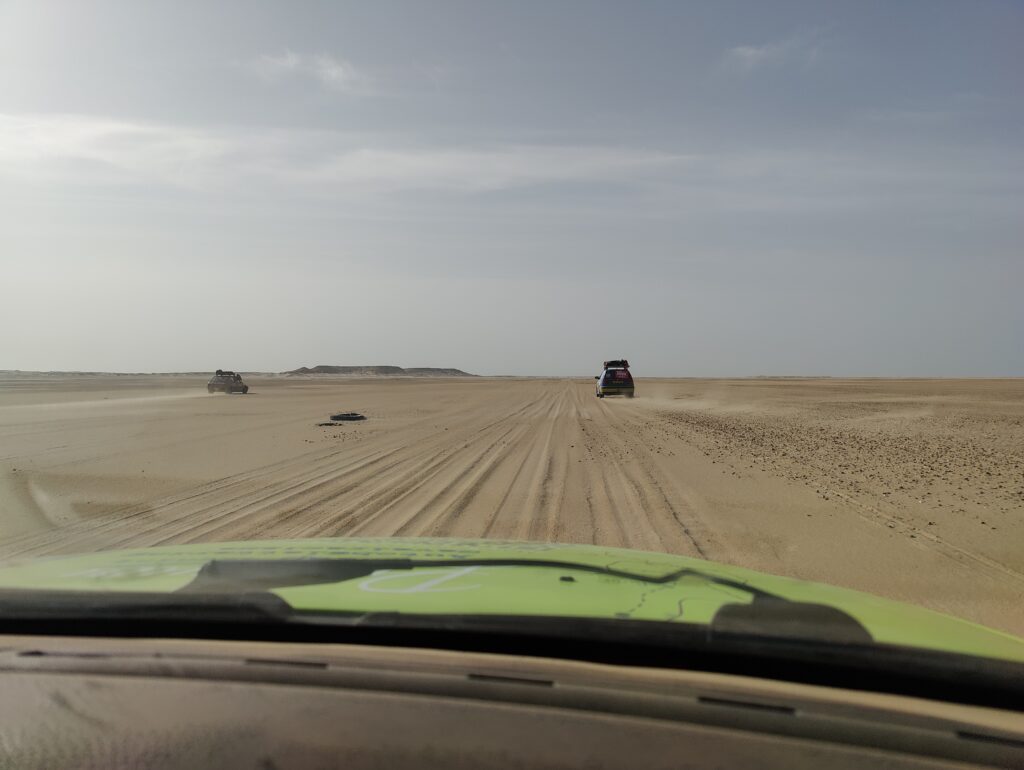

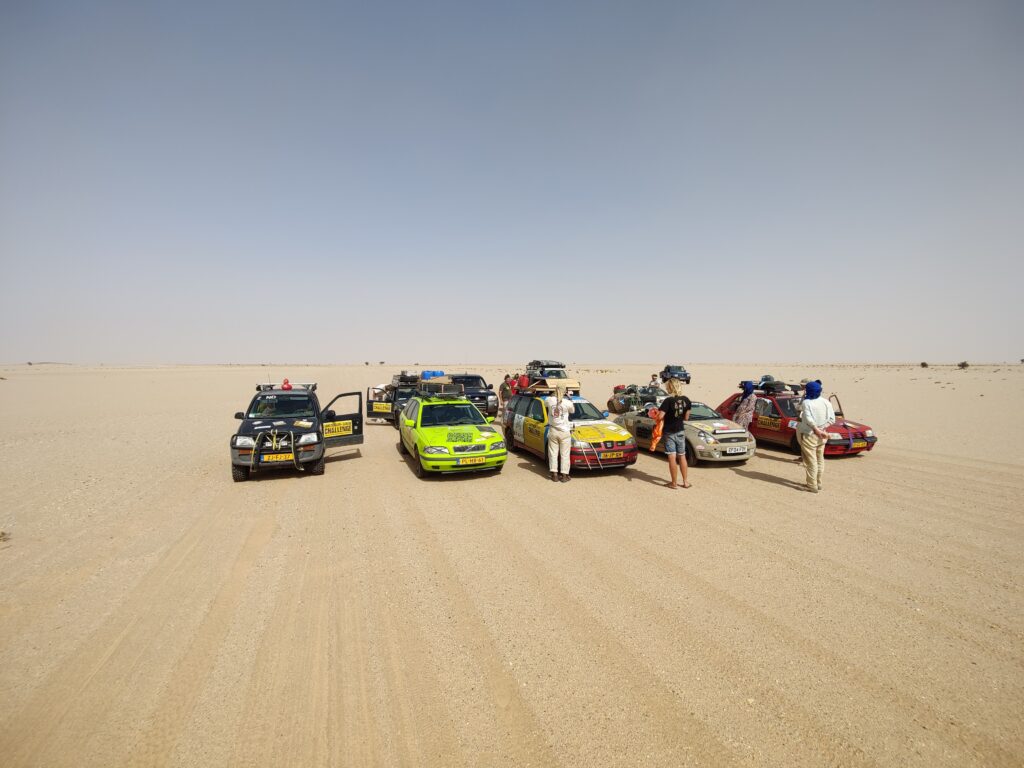
After driving a whole day like this in the desert, it was time for us to make camp. We found a few bushes which provided the slightest bit of privacy for some of our needs the next morning — if you know what I mean…
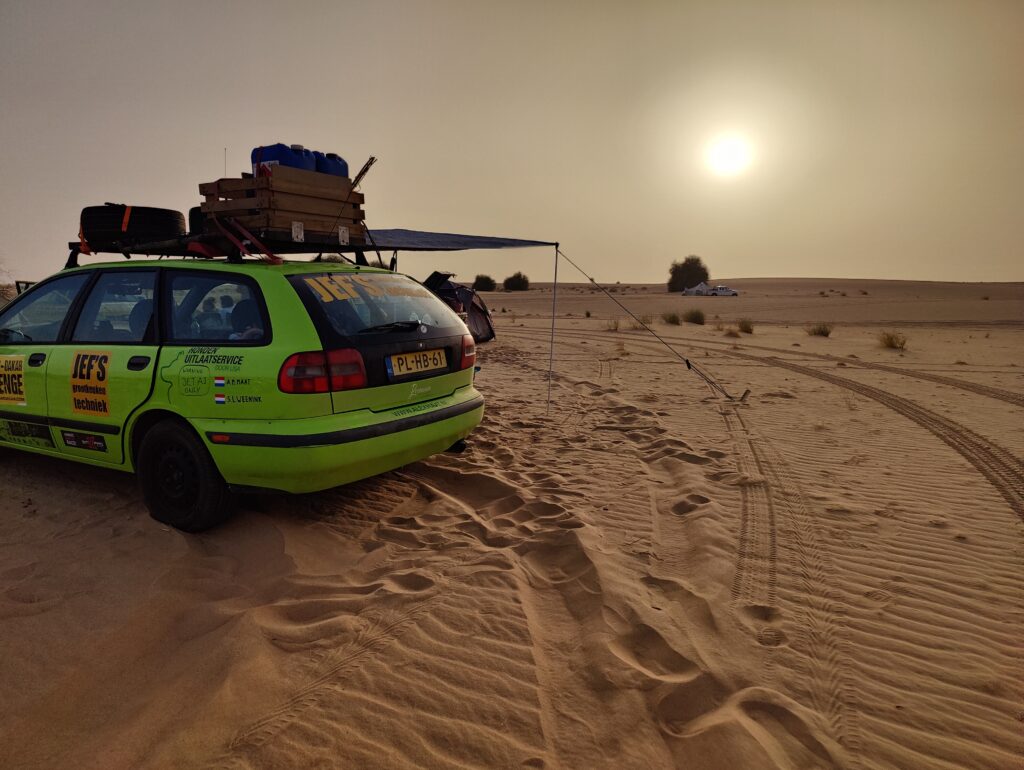
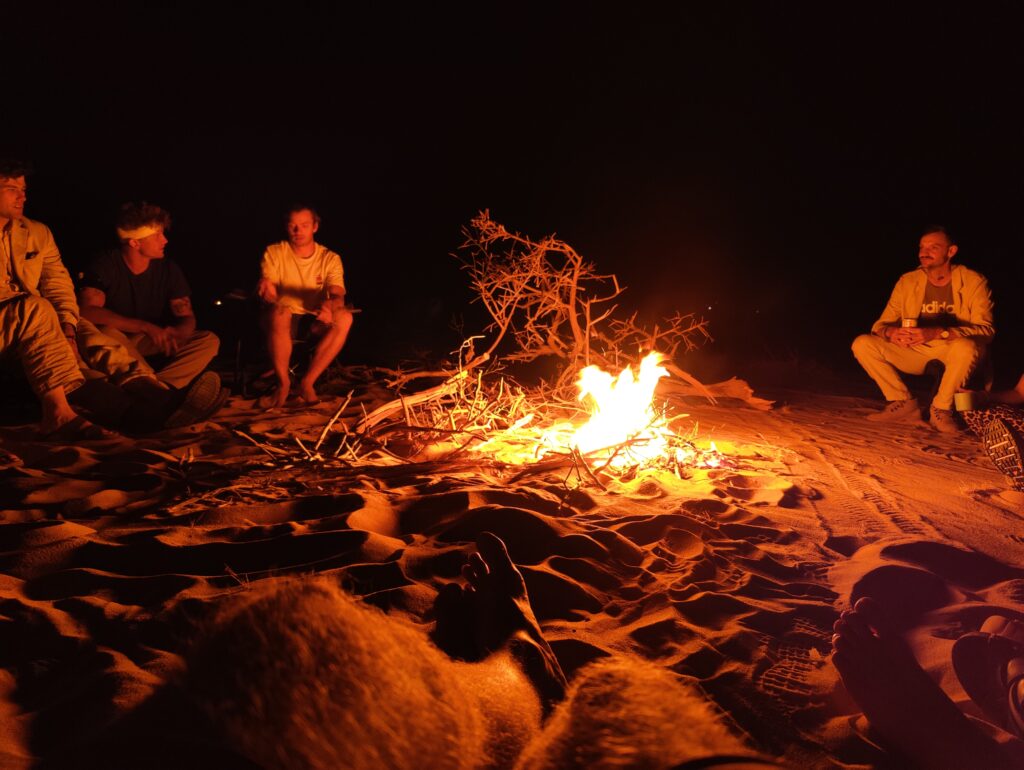
Happy faces the next day! Nothing but pistes for all of us to cross.

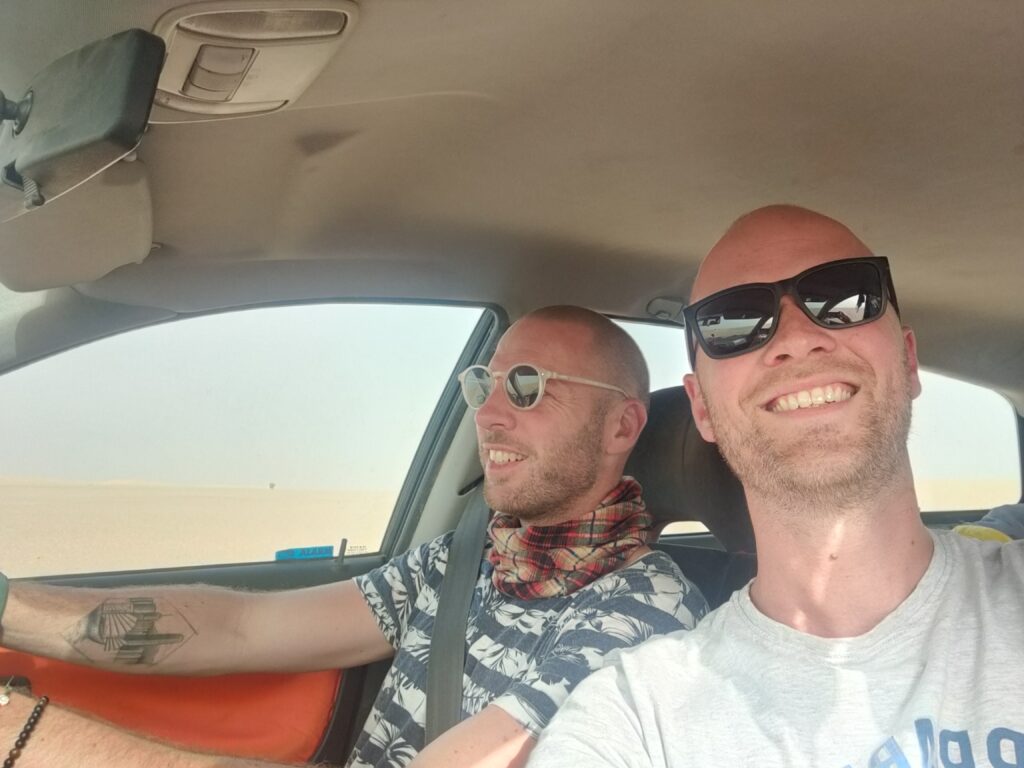
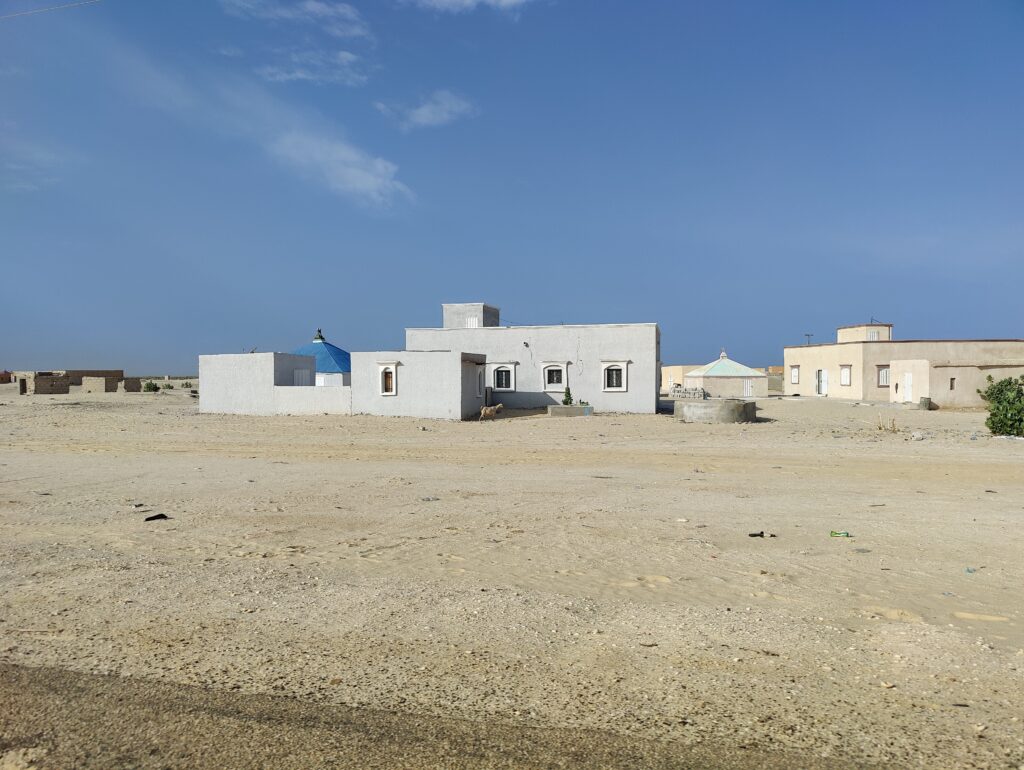
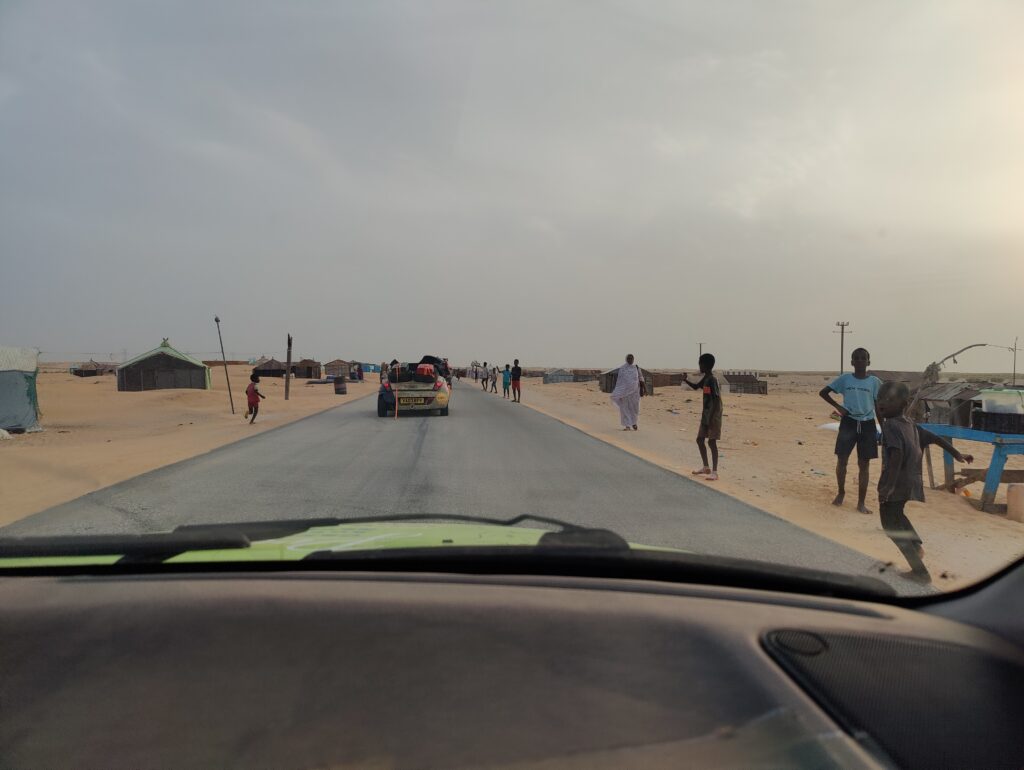

Already lots of people alongside the road, but the deeper into Mauritania, the more people greeted us whilst passing by. This is where we threw some tennis balls out for the youngest kids to play with.
Next up is the border crossing into Senegal…

…which took us hours and hours again.
Senegal
Back to civilisation. Out of the desert and into a green world.
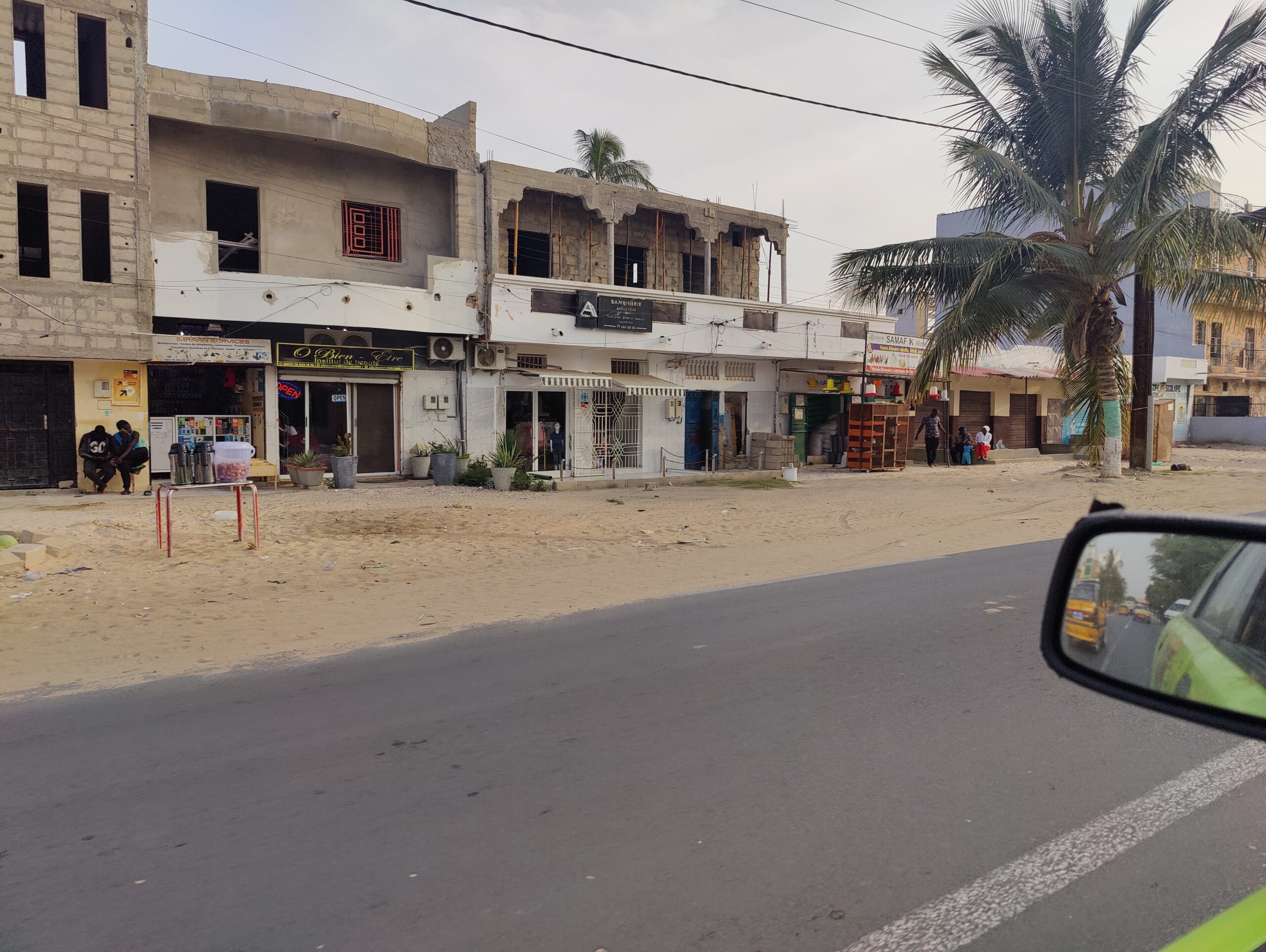
Driving into Senegal was a breeze. Such a colourful country. The atmosphere increased and we got a feeling of happiness and joy. Sand dunes are beautiful themselves, however you kinda miss the greenery.


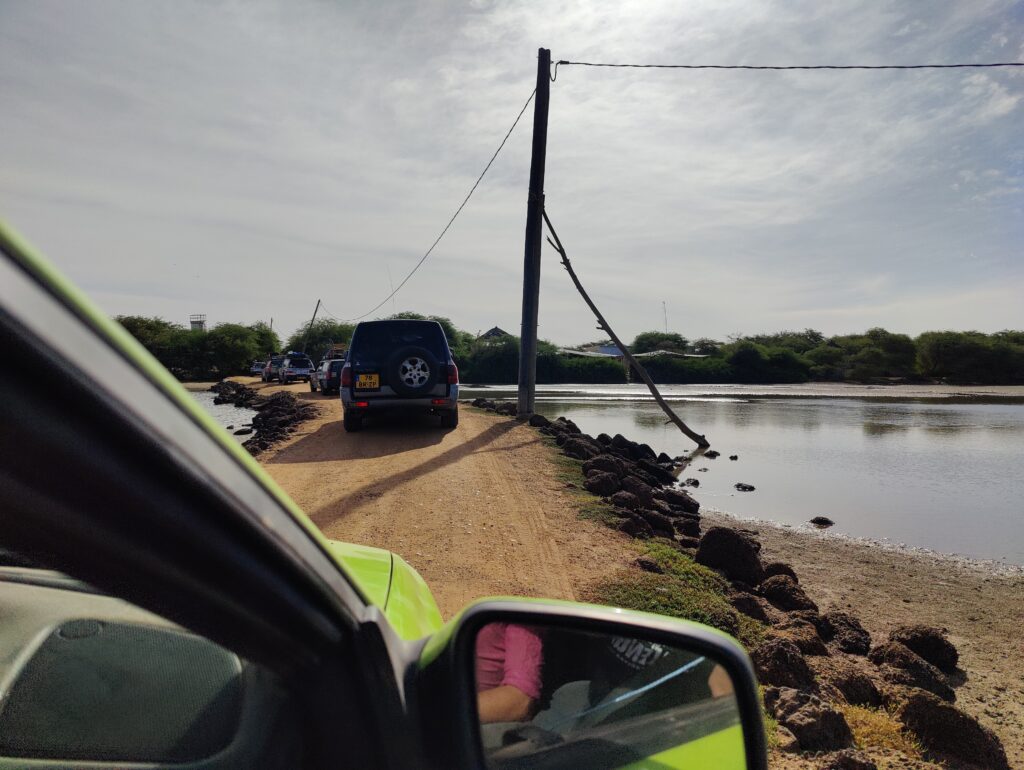
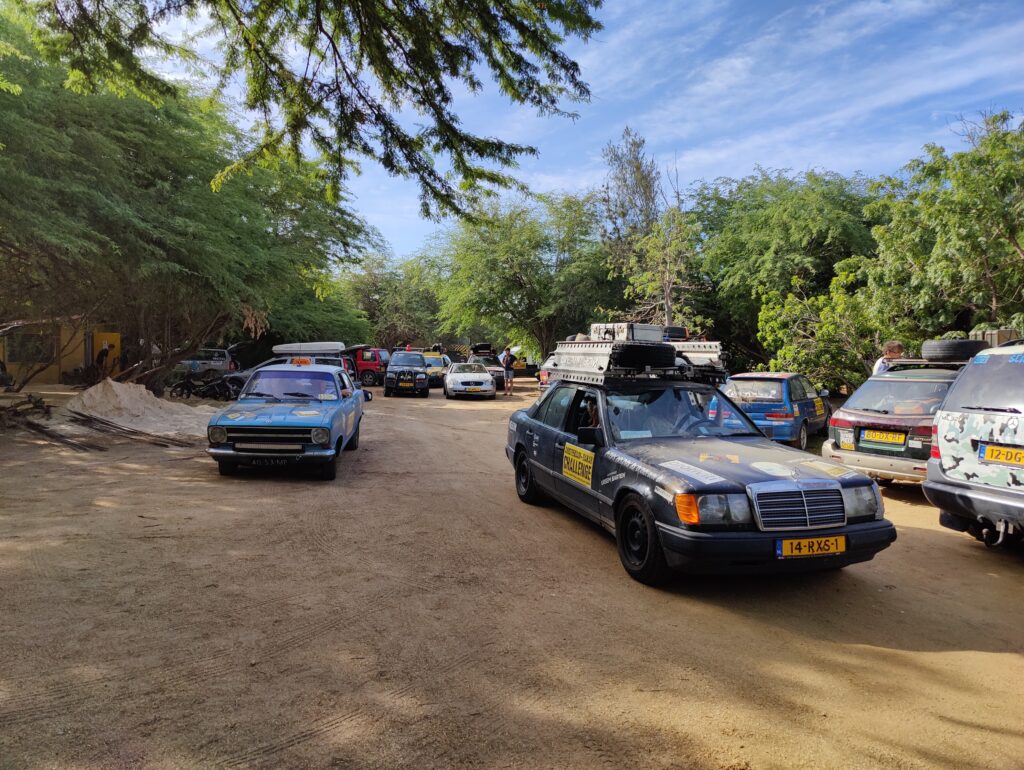
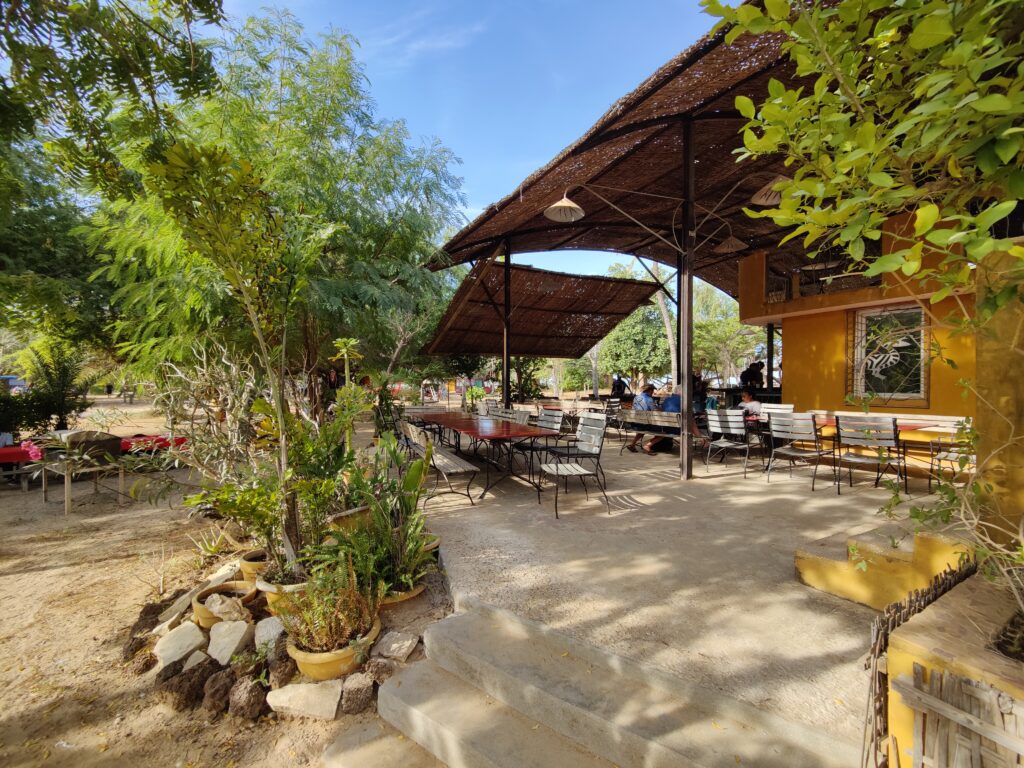
And since Mauritania was a dry country (no alcohol) and Senegal is a bit more sensible, time to head for the first real bar in days!
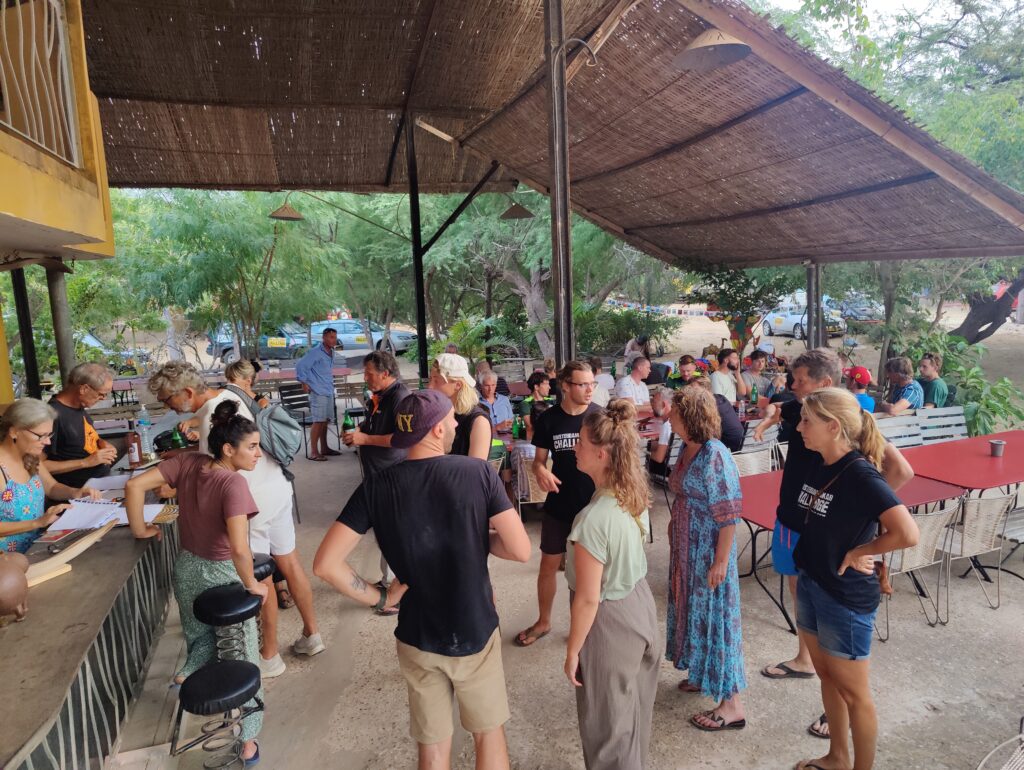
People generally looked more like they enjoy life a bit more than the country up north. People laughing, singing, dancing and dressing the like.
Up next was our stretch to the finish at the original finish at Lac Rose, Dakar, in Senegal. Here is to a few hours of awesome beach driving with some challenges along the way. How awesome is that?
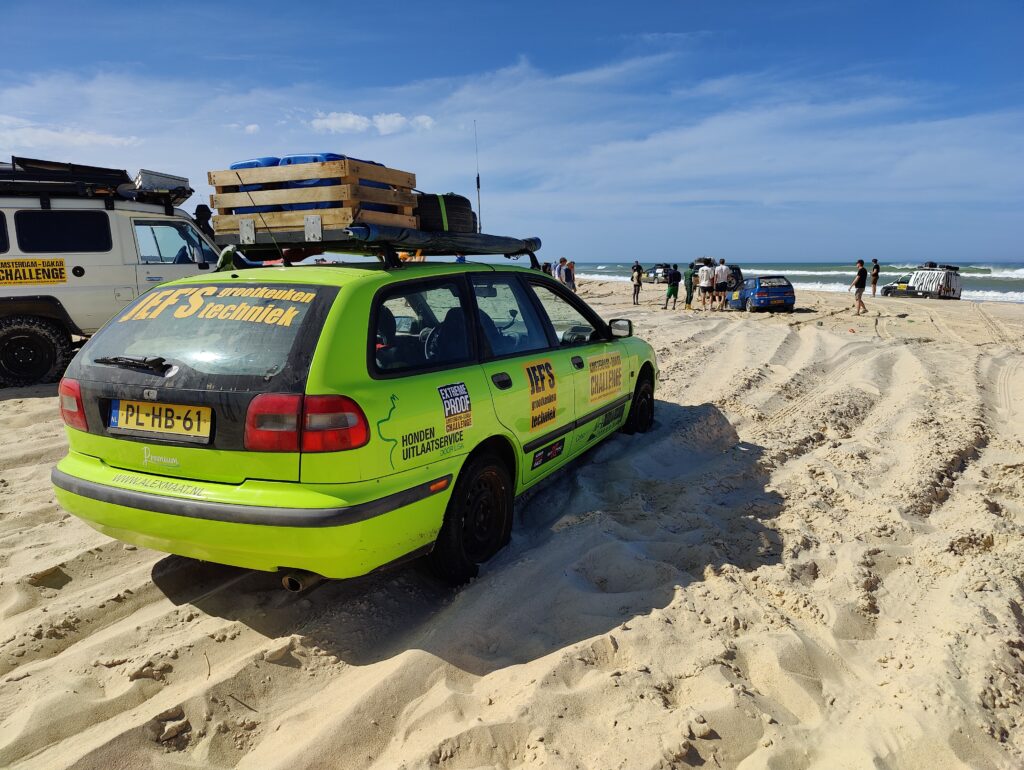
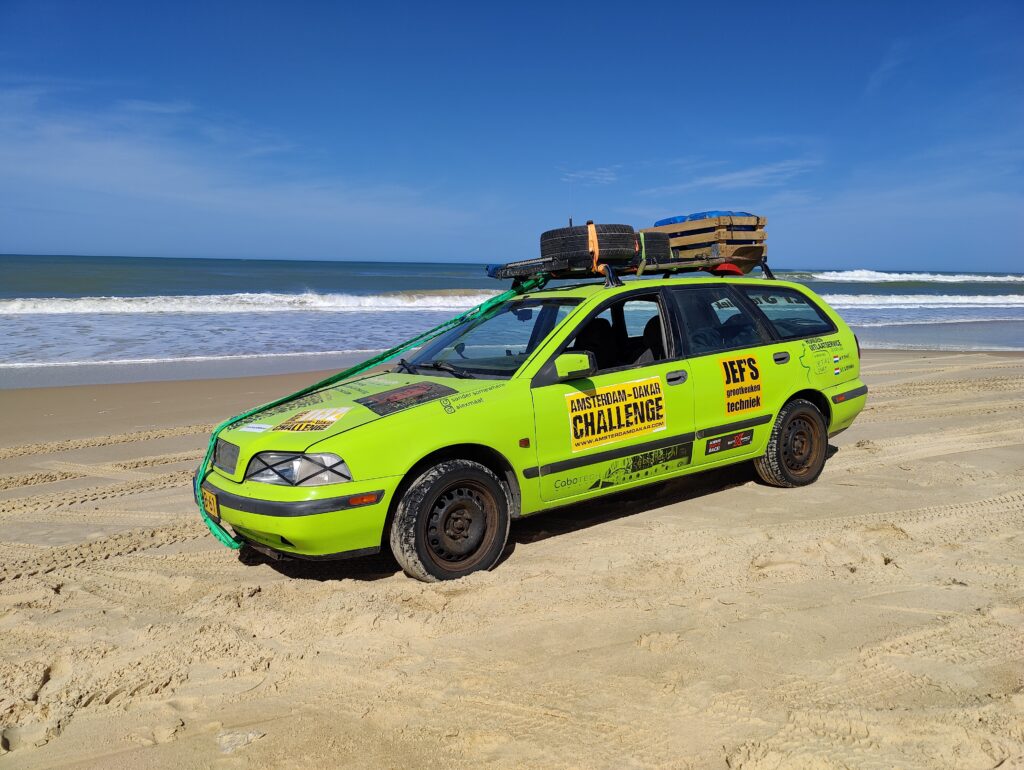

Some trouble getting on the beach first… But we’ve made it with lots of pushing, towing and the help of others.
And after racing off the beach with 100 km/h+ to not get stuck while getting off, we made it in one go. Of course we had to go back to help the others who got stuck getting off the beach too. After that we just had a short drive to go.
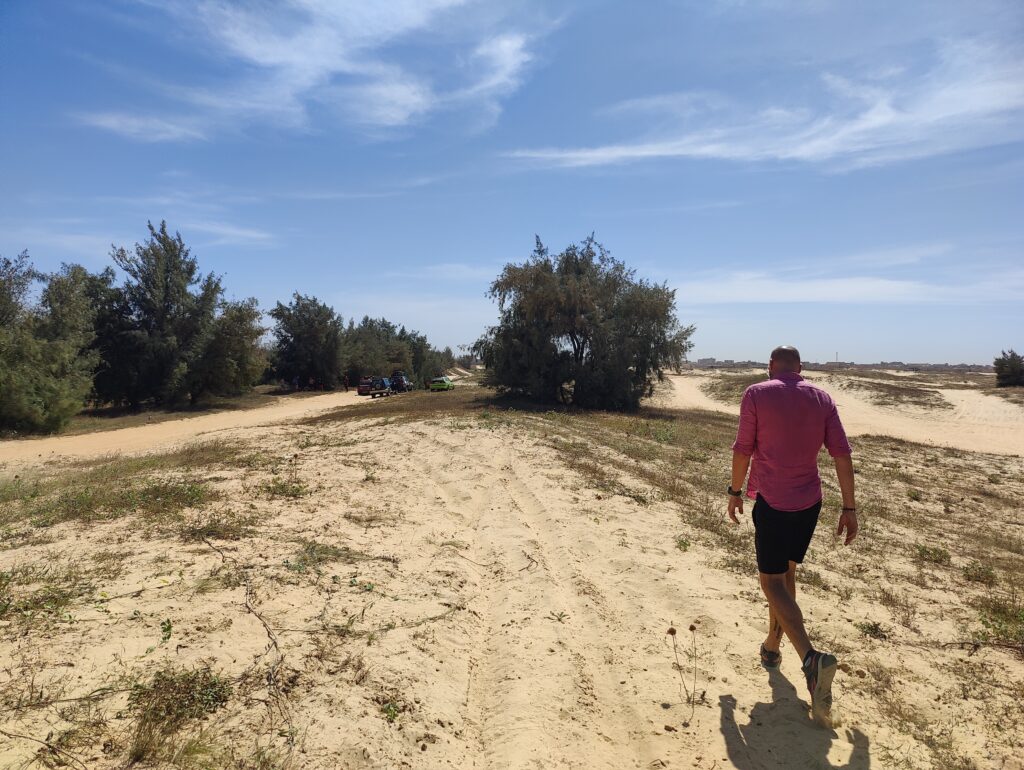
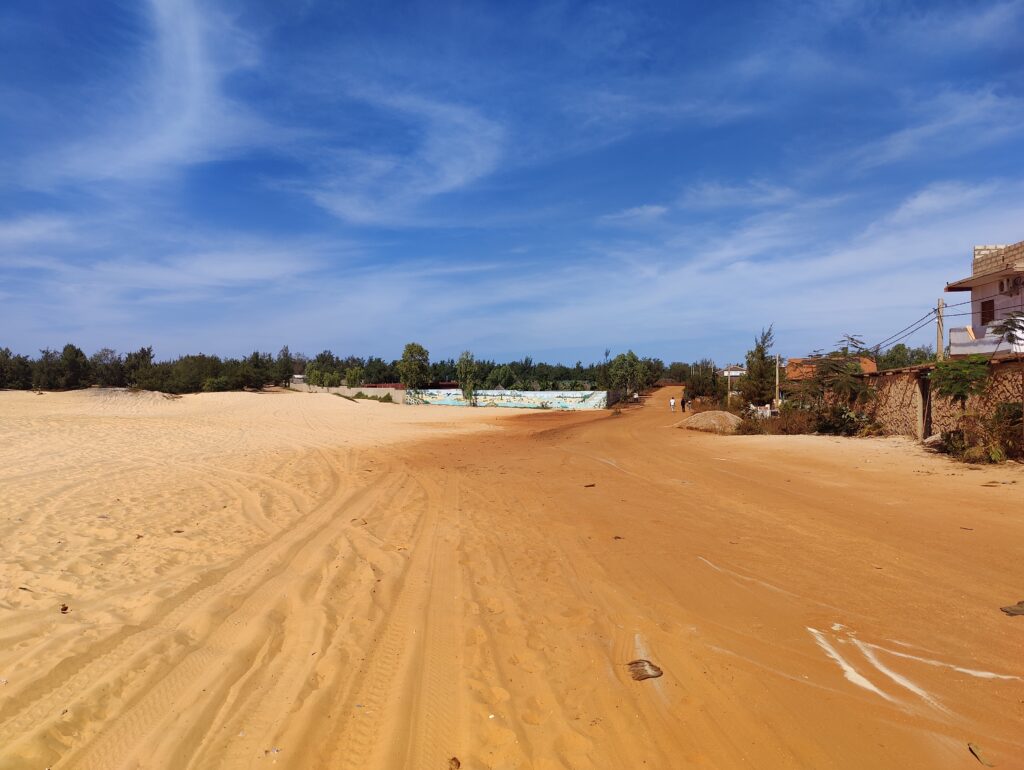
And with Lac Rose in sight, we drove straight to the finish line and finished — we’ve made it to Dakar!

Finish in Dakar!!!
Right at the finish we received a welcoming party, some ice cold beers, live music and as many congratulations as one could wish for.
We were thrilled knowing we just drove 7000 km together in our Volvo station barrel — ready to be sold at a charity auction in Gambia. But first, of course, we joined in on the fun.
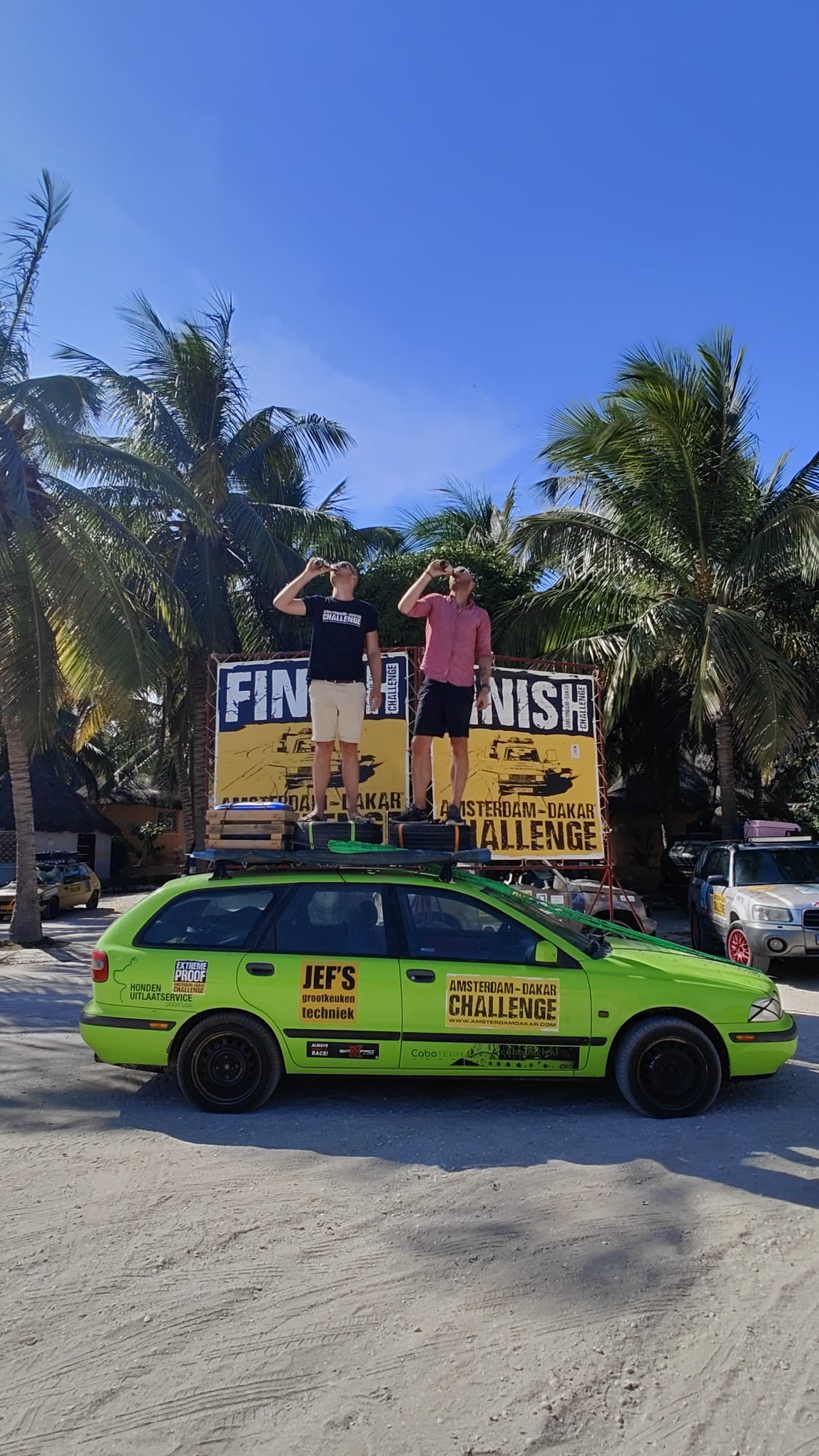
And while we’re at it, many many many thanks to our “Dakar family” who were with us at all times to help each other out in any way imaginable.
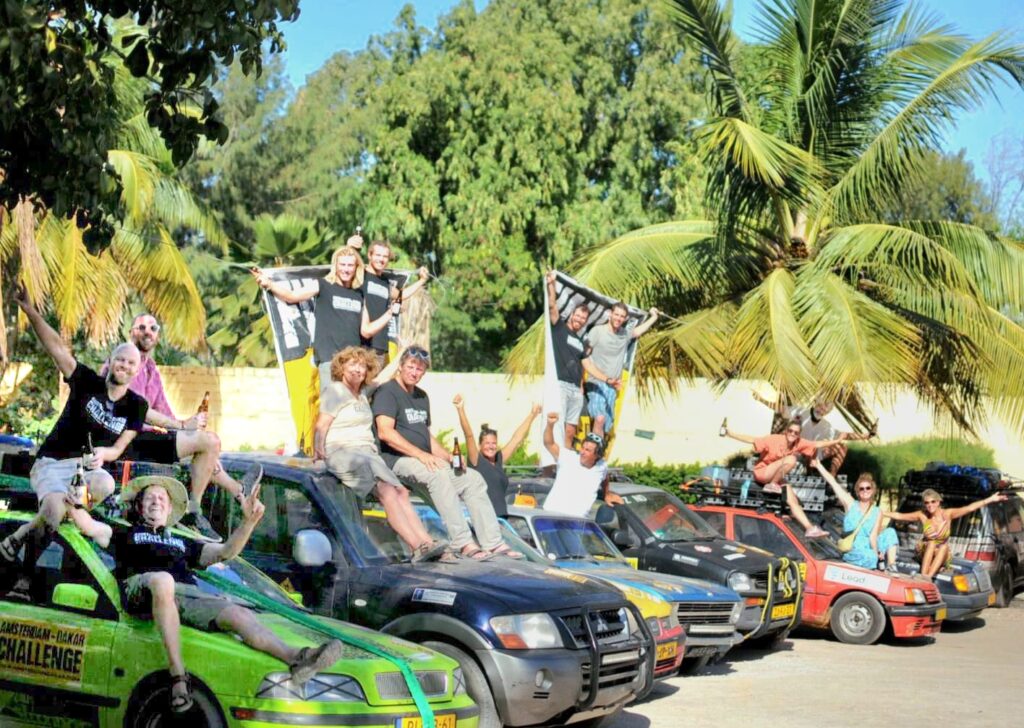
After our celebration, we found our hotel to be absolutely perfect after our trip and we enjoyed the pool, beach and view for some days before heading off into Gambia to get our car sold at a charity auction.

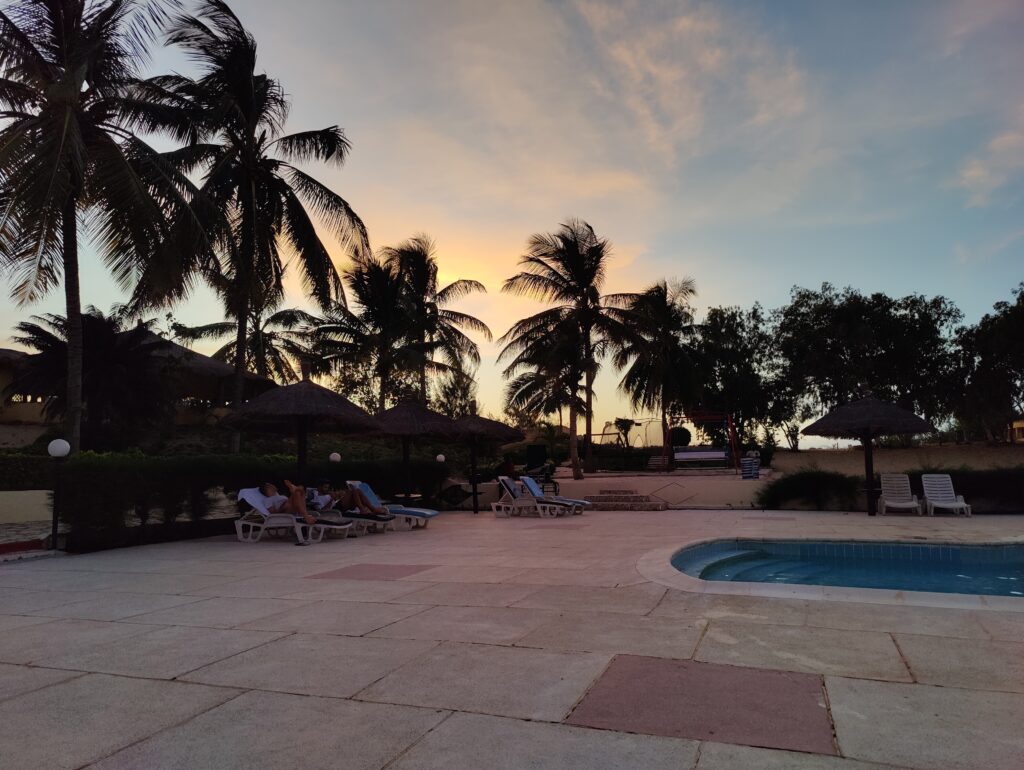
Gambia
Visiting the village we sponsored. Selling the car to charity. And our last days.
Where Dakar itself is “just a city”, the finish at Lac Rose was the most iconic. After some rest, we continued into The Gambia. And because we had to cross a specific bridge a the east end of the country, we had to drive some hours to get there while driving in convoy at 80 km/h on end.
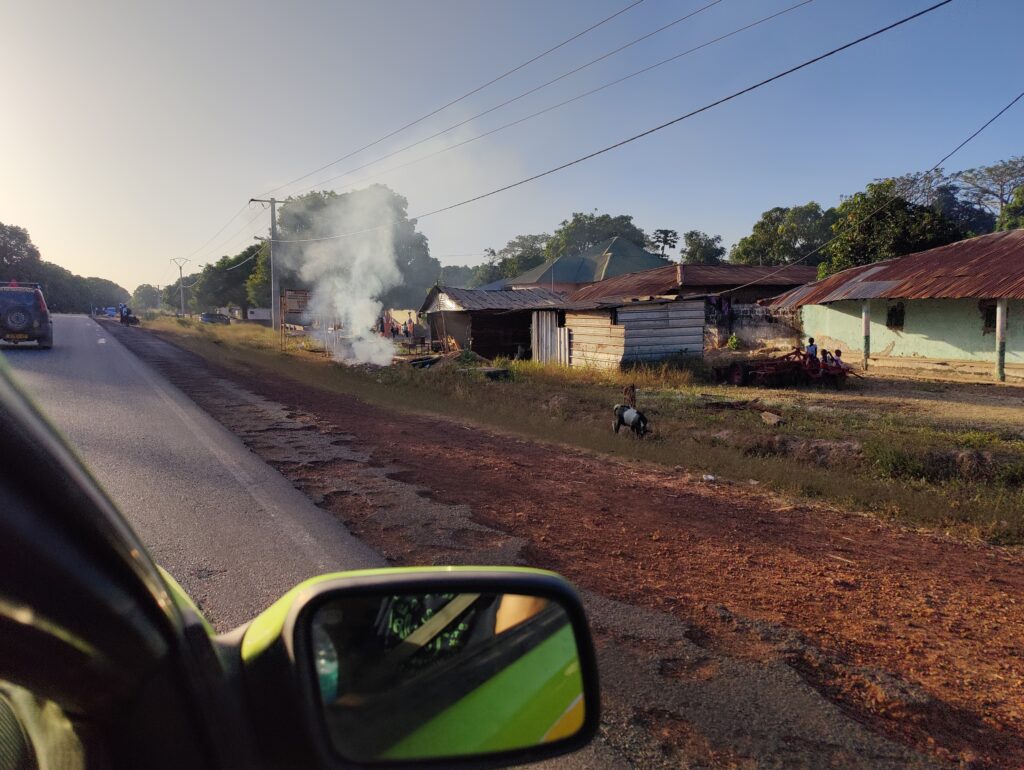

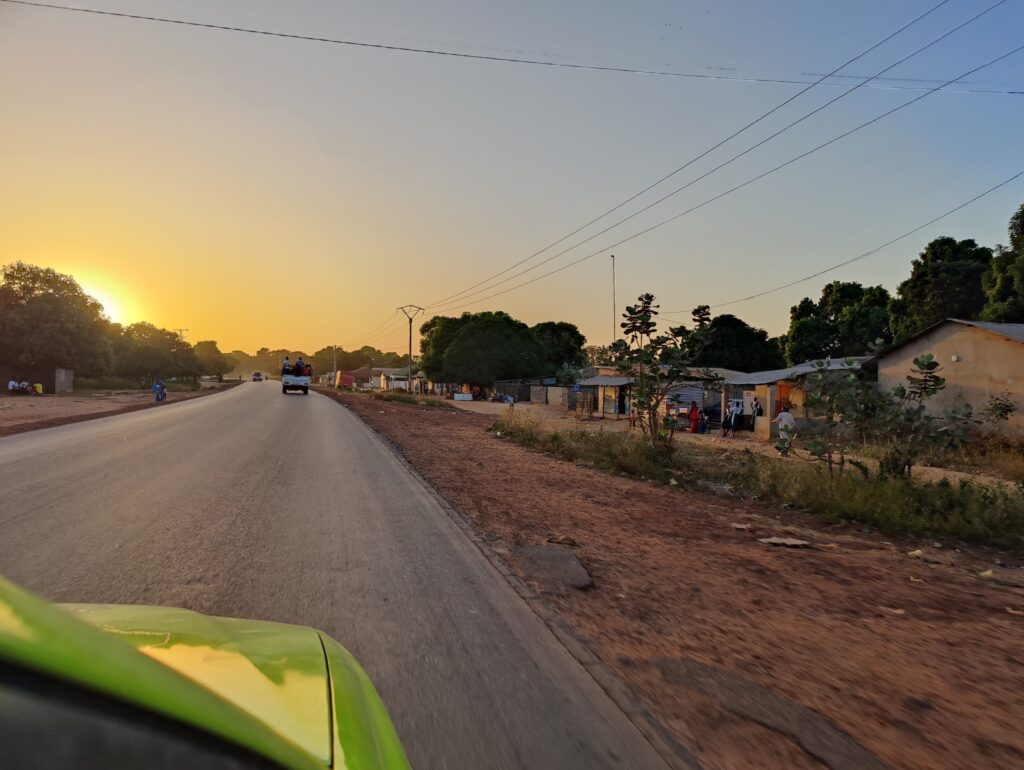
After getting into Gambia, we drove back to the coast where our car would be sold. This would be our last accommodation of our trip. We found ourselves at the pool and having dinner with all of our “Dakar family”.
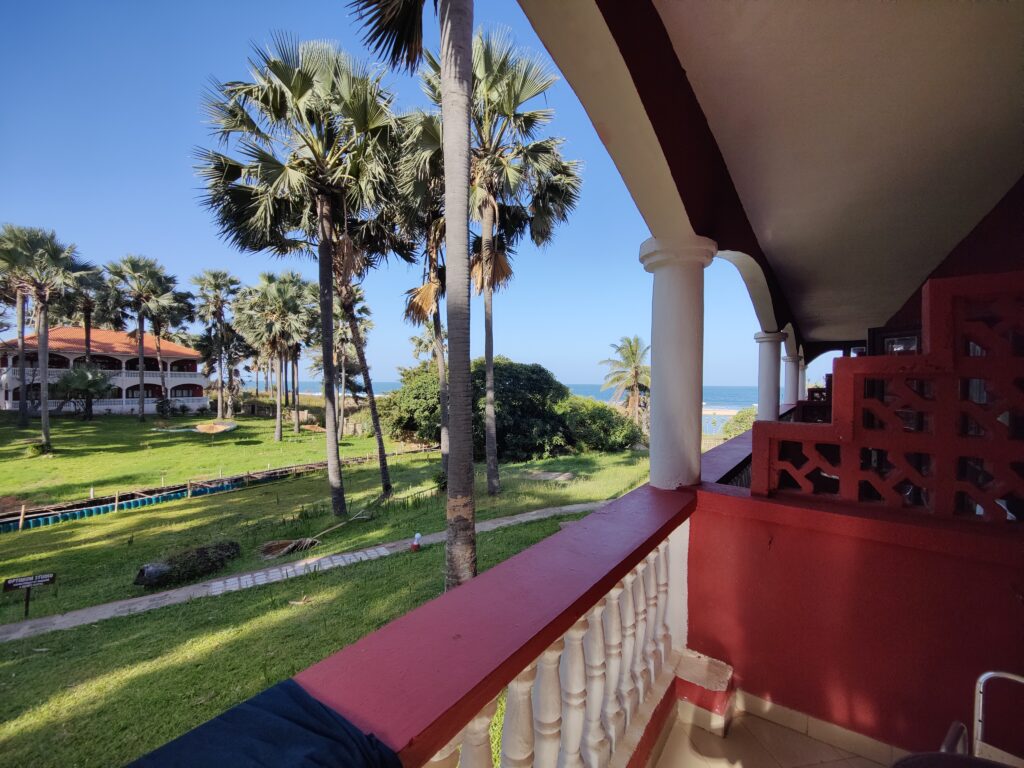
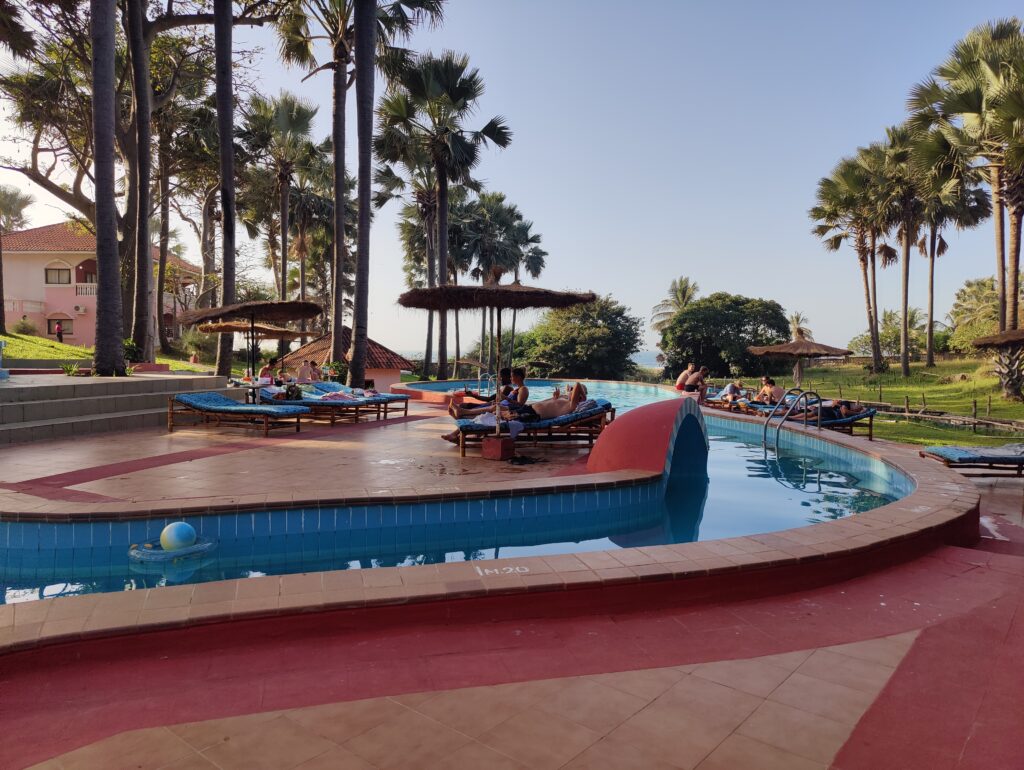
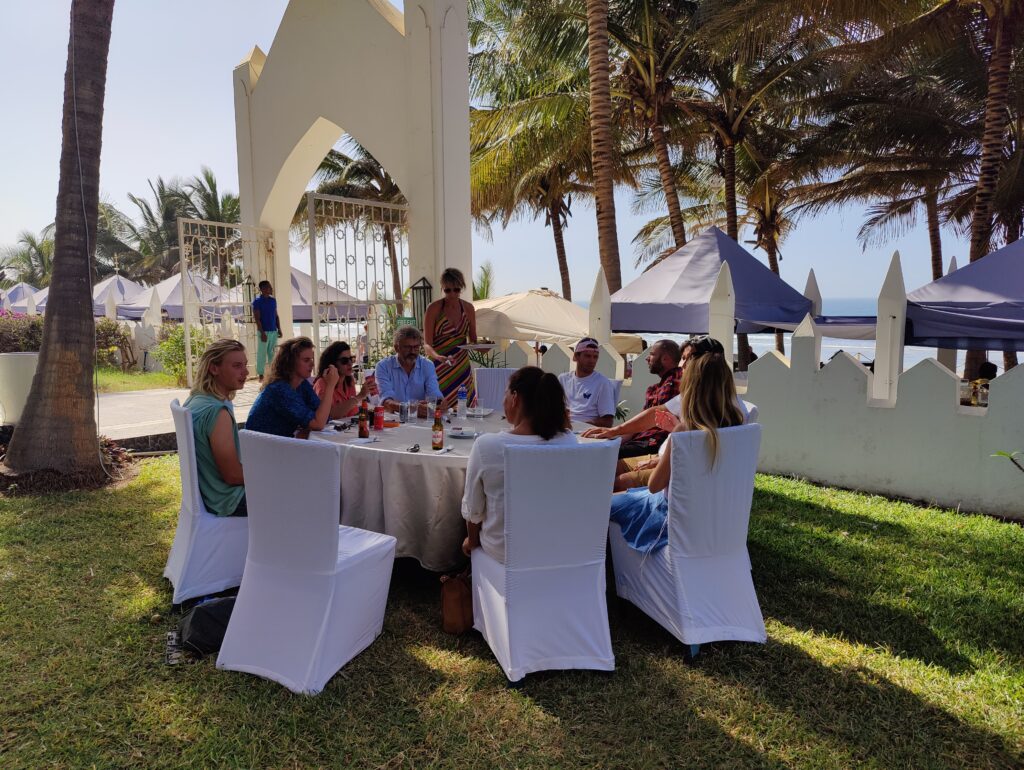
The next day however, we had a visit planned where we would drive to the village where we could see the location of where the donations were going. We both had mixed feelings about going and a bit sceptical how we’d be seen, but as it being part of the trip, we decided to join and visit the village.
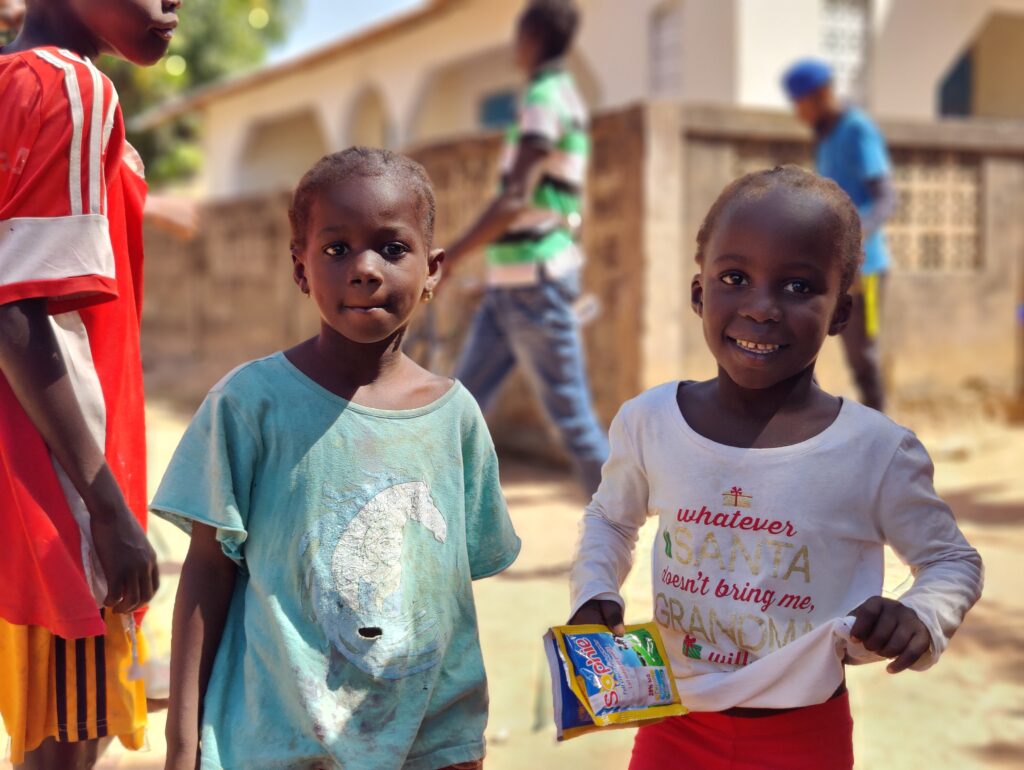

And while all the important members of the community shared their appreciation to us, we still felt a little uncomfortable being in this situation. However, it was an important part of our journey in which we felt we had to take part.
Thank you for your hospitality and gratitude.
We went back to our hotel and prepared the car for cleaning and auctioning the next morning.
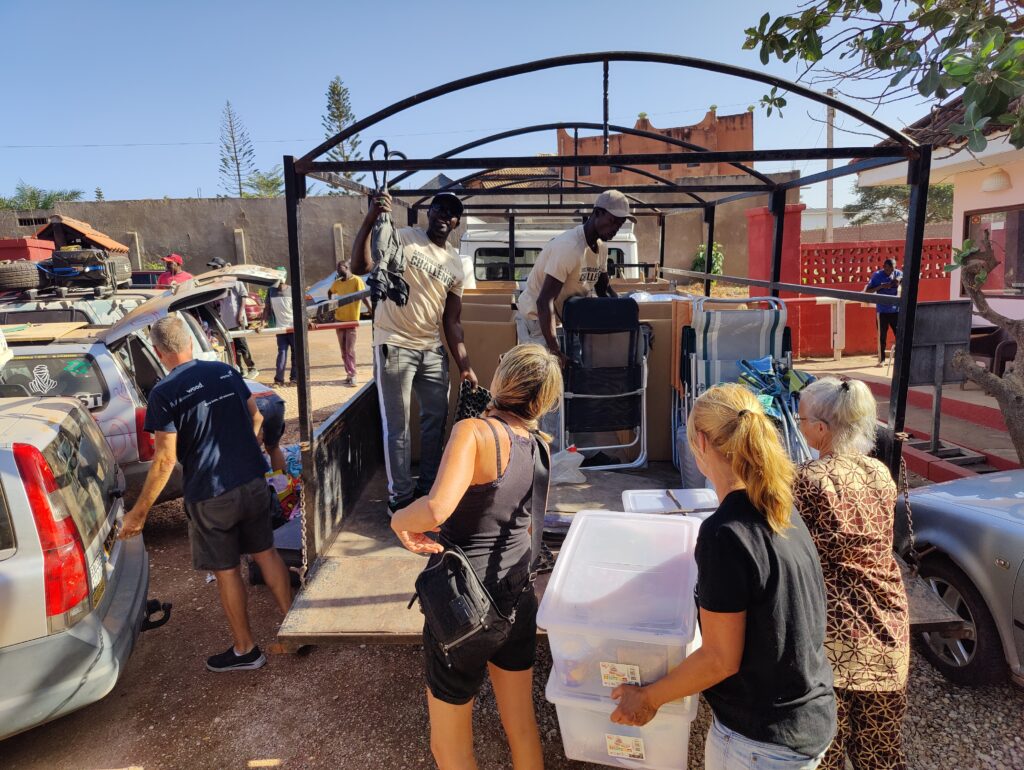
And after getting it cleaned, we drove to the stadium in which the auction would take place.
When it was our turn to promote our car, we drove it inside and spoke to the audience how great this car was, what we’ve fixed along the way and the fact it actually brought us here. SOLD!
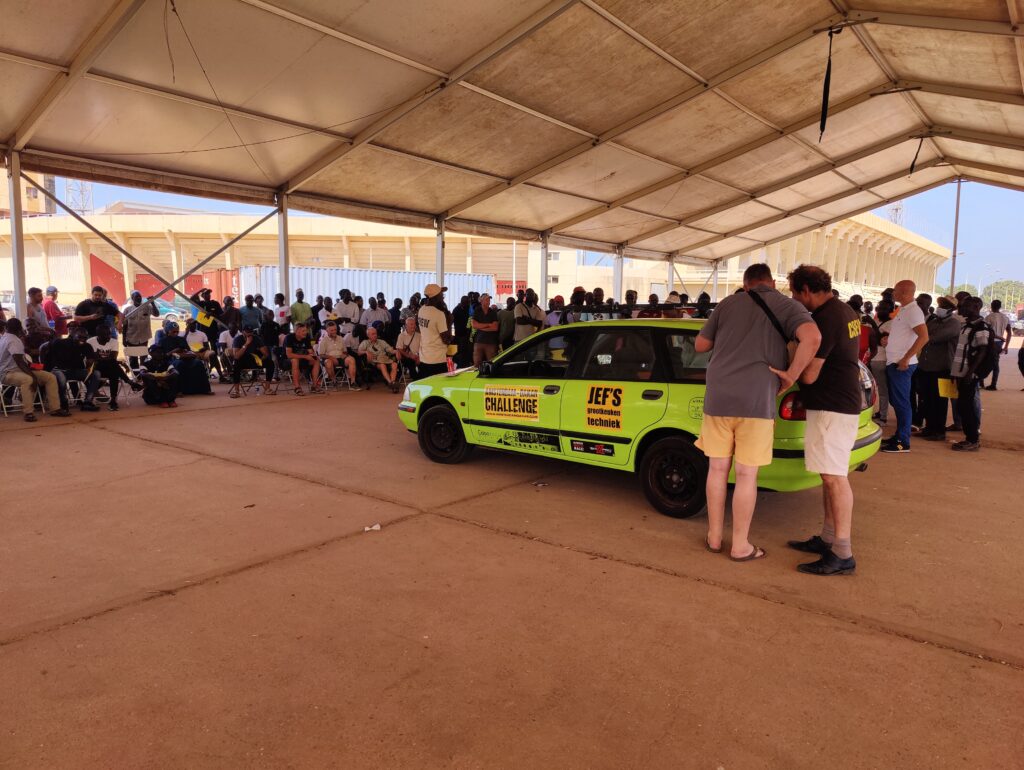


Gentlemen, enjoy your new car and thank you for buying it from us! Proceeds go 100% to charity to both our good causes.
Thank you, thank you, thank you. It was an honour and a privilege.
